

Chain Sizing
Rode length/ scope.
The ratio of the length of rode to the water depth is known as the scope. Anchoring with sufficient scope brings the direction of strain close to parallel with the seabed. In general the longer your rode the better. 10:1 Scope is preferable in windy conditions. It’s recommended that an average cruising boat carries at least 300 feet of rode, which will allow for 10:1 scope in 25 feet of water (5 feet allotted for free-board height). This will ensure that most of the time you can anchor with 10:1 Scope.
It is generally accepted that in a storm situation we strive to put out 10:1 scope, but why? See how anchors maximum holding power varies with changing scope.
Many cruisers find that 10:1 scope is a nice compromise between rode length and maximizing anchors holding power.
Rode Strength:
ABYC data was developed in 1950s to indicate the strength required of an anchor, capstan, rode or a cleat. Tom Hale a past ABYC technical director said it is not unreasonable to apply the figures in the chart above to the entire anchor system.
After comparing this data in this table to work that has been done since we come to the conclusion that the values presented here represent loads expected on the anchor rode if anchored on chain only without the use of the snubbing system. Further using a line rode or and adequately designed snubber you can reduce the loads by a factor of 3, by eliminating the shock loads. This is an argument for why its so important to use a snubber but when sizing anchor rode or your anchor, it is important to consider loads as stated in the table. The reason is that we can not rely on the integrity of a snubber in a storm. Should the snubber fail, the integrity of the rode should be sufficient to handle the loads without the snubber.
The ABYC Horizontal Working Load (lbs) Table
When sizing your gear you should make sure that the Working Limit Load (WLL) of your rode is higher than the loads expected in a storm. Sizing the working rode for a hurricane might not be practical but sustained winds greater than 40 kts are commonly encountered by cruising vessels on anchor. Sizing for such conditions is a reasonable way to approach the problem and is the basis for our recommendations.
WLL: Working Limit Load /Safe Working Load (SWL)/Normal Working Load (NWL) is the load that the rode can safely support without fear of breaking. Usually marked on the equipment by the manufacturer and it is often 1/3 to 1/4 of the Minimum Breaking Strength (MBS) for chain and 1/10 to 1/12 the Minimum Breaking Strength (MBS) for rope.
Manufacturers:
This is the list of the common chain manufacturers that sell in usa.
ACCO/PEERLESS
WESTMARINE (private labeled)
CERTIFYING BODIES: (the Standards from different certifying bodies some time overlap)
- NACM – National Association of Chain Manufacturers (US Chain manufacturers make chain to NACM specs)
- ISO – International Standards Organization
Chain Link Geometry:

- Proof Coil Grade 30: Proof coil chain is a general purpose chain, frequently used for light duty tow chains, tie down chains and logging chains. Links are longer, thus the chain is lighter than BBB and G4 dimensioned chain for equivalent length.
- BBB: Short, compact links. The short link makes the chain more flexible and ideally suited for a windlass, usually made in Grade 30 only.
- G4 Dimensioned chain : Most common specification for Hi Test Chain sold in the USA.
- DIN 766 (Common Standard for Metric Chain)
- ISO4565 G70 Chain
- Grade L Chain (AS2321-2006) Grade 30 Chain specified for the Australian Market
- Stainless Steel Chain : Imported and US Made stainless steel chain is available made to various NACM, ISO, DIN specifications . Stainless Chain is available in several grades: 304, 316, Duplex. Duplex stainless steel chain is the strongest option available in Grade 60 and is more corrosion resistant than 304, 316 stainless steel and is ussually made to G4 and DIN776 dimensional standards.
Chain Grade:
National Association of Chain Manufacturers The chain grade is based on the nominal stress in the link at the design breaking force strength. (It is calculated by taking the minimum breaking force load and dividing by two times the nominal cross sectional area of the link.) Another words the higher the grade the stronger the chain. Chains Grade 80 and above are considered to be ok for overhead lifting. These higher grades are usually not easily accessible. Most common grades for anchor chain are Grade 30 (BBB & Proof Coil) & Grade 40 (HT)
Chain Strength Table:
Note: the WLL (Wroking load) for chain is usually defined ¼ of the UBS (Ultimate Breaking Strength) expressed in pounds for all chain types except G4, Grade 40 HTChain has the WLL defined as 1/3 of the UBS. It is unclear why the WLL definition is different for Grade 40 chain. To make the comparison easier we defined Working Load below for all chain as 1/4 of the UBS.
Main focus should be placed on sizing the chain for the expected loads. Using higher grades of chain can offer some weight saving however. For example, 300 feet of 3/8 BBB weighs 468 lbs vs. 300 feet of 5/16 G4 HT which weighs 310 lbs and has higher strength. Thus if taking 160 lbs off the bow is considered important, using higher grade chain definitely has its advantages. Another issue is matching the gypsy on the windlass to the chain size and type. A windlass gypsy designed for 5/16″ High Test chain will not work on 5/16″ BBB, which has shorter, more compact links. Many windlasses have a selection of gypsies, which can be Special Ordered to fit the rode on your boat. Often availability and the cost of the right gypsy enter the calculus of which chain size and type is right for you. It is important to remember not to compromise on the strength of the system when making such decisions.
Chain Sizing Recommendations:
How much chain:.
It’s recommended that an average cruising boat carries at least 300 feet of chain, which will allow for 10:1 scope in 25 feet of water (5 feet allotted for freeboard height). This set up will ensure that most of the time you are anchored on chain and reduce the likelyhood of rode failure.
Review Cart
No products in the cart.

Boat Anchor Chain – 11 Things You Should Know
A boat anchor chain is one of the most important pieces of equipment on a boat. The chain attaches the anchor to the boat and provides a strong connection that can hold against even the strongest winds and waves. It’s important to choose a quality chain that will withstand wear and tear over time.
When choosing for a boat anchor chain, be sure to consider the thickness and strength of the metal. The thicker and stronger the chain, the more reliable it will be in difficult conditions. Also look for corrosion-resistant coating to protect it from rusting.
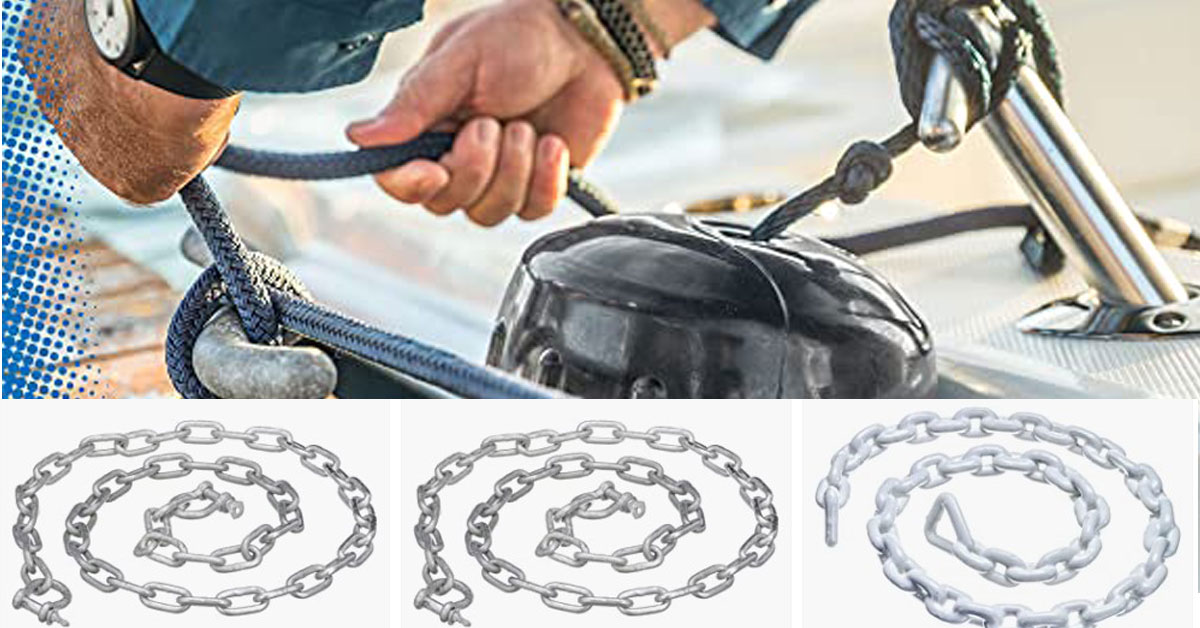
How is anchor chain made
When you’re cruising along and drop your anchor, you’re relying on a piece of equipment known as an anchor chain. This chain is made up of heavy-duty links that connect the anchor to the boat. It’s important to know how this crucial piece of equipment is made.
The process of making this chain begins with steel billets. These billets are heated until they are molten and then formed into chains. The chains are then put through a series of machines that polish and straighten them. They are also treated with a coating that helps to protect them from corrosion.
The links in an this chain can be up to nine inches long and weigh up to 14 pounds each. The entire chain can weigh more than 2,000 pounds.
Types of boat anchor chains
When it comes to boat anchor chains, there are three main types: galvanized, stainless steel, and nylon coated. The main difference between these chains is the material used in their construction.
Galvanized chains are made of zinc-plated steel. This makes them less likely to corrode in salt water environments. However, they are also the heaviest and most expensive to consider.
Stainless steel chains are resistant to rust and corrosion. They are also lighter than galvanized chains, but more expensive.
Nylon coated chains offer the best resistance to corrosion and abrasion. They are also lightweight and affordable.
Boat anchor chain size
When it comes to boat anchors, size does matter. The weight of the anchor is critical, but the size of the chain is also important. You don’t want to use a small chain with a large anchor, or a large chain with a small anchor.
The right size chain will help you set your anchor quickly and keep it in place. It’s also important to use a chain that is strong enough to hold your boat in place during high winds and rough seas.
The most common size for boat anchor chains is 5/16 inch. This size is strong enough to hold most boats in place, but it’s also lightweight and easy to handle. If you have a larger boat, you may want to use a chain that is 3/8 or 1/2 inch thick.
How much anchor chain do you need
Anchors and chains are important pieces of safety gear for any boat. It is important to know how much anchor chain you need for your boat in order to ensure that you have the proper weight and length of chain.
The first step is to determine the size of your anchor. This can be done by consulting your boat’s owner’s manual or by measuring the anchor itself. Once you have the size of your anchor, you can then use a chart to find out how much chain is needed.
Most boats will need between 50 and 100 feet of chain, depending on the size of the anchor and the depth of the water. It is also important to make sure that you have enough rope or line to attach the chain to the bow of your boat.
How to attach chain to anchor
When anchoring a boat, it is important to use a heavy chain to ensure the boat stays in place. The chain should be attached to the anchor and the anchor should be attached to the boat. There are several ways to do this.
One way is to use an iron shackle. This is a metal clip that can be opened and closed. The shackle can be attached to the chain and then attached to the anchor.
Another way is to use a swivel clip. This is a metal clip with a swivel on it. The swivel allows the clip to move around so that it can attach easily to both the chain and the anchor.
A third way is to use an anchor bridle. This is a piece of rope with loops on each end. One loop goes around the anchor and the other goes around the chain.
When to replace anchor chain
Anchor chain should be inspected regularly for signs of wear and tear. If the chain is worn or damaged, it needs to be replaced.
It’s important to know when to replace it. If the chain is heavily corroded, damaged, or has links that are missing or broken, it needs to be replaced. Another indication that it might be time for a new chain is if your current one doesn’t have enough length to reach the bottom in the area where you normally anchor.
When replacing it, make sure you get the right size and type of chain for your boat.
How to choose the right anchor chain
When you’re looking for a new anchor chain, there are a few things you need to keep in mind.
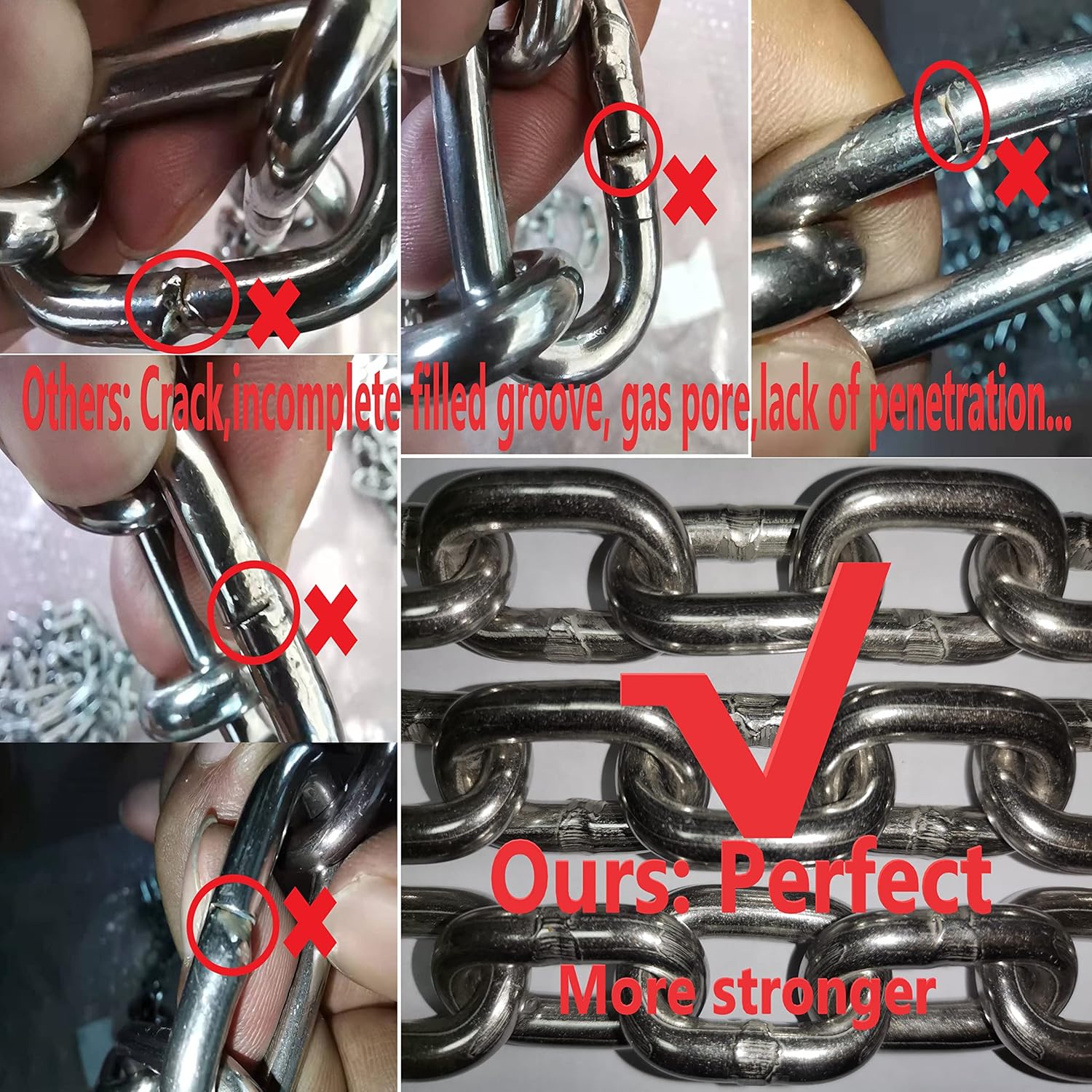
The size of the boat or ship
When you are looking to buy anchor chain, it is important to consider the size of your boat or ship. If you have a smaller boat, you don’t need as much chain as someone with a larger boat. You also need to make sure that the chain is strong enough to hold your boat in place.
The size of an anchor chain refers to the diameter of the links in the chain. A larger diameter will provide more strength and stability than a smaller diameter. It’s also important to make sure that the weight of the chain is appropriate for your boat. A heavy chain can cause problems with stability and maneuverability.
Materials of the chain
When you are choosing an anchor chain, you need to consider the material of the chain. One popular option for anchor chain material is stainless steel. Stainless steel is corrosion resistant and has a high breaking strength. However, it can be expensive and it is heavier than some other materials.
Another option for this chain material is galvanized steel. Galvanized steel is less expensive than stainless steel and also corrosion resistant, but it does not have as high a breaking strength as stainless steel.
Finally, some people choose to use nylon rope for their anchor chain. Nylon rope is lightweight and has a low breaking strength, but it is also very affordable.
The weight of the anchor
Whe weight of the anchor should be a major consideration when purchasing. Lighter anchors need lighter chain, while heavier anchors require heavier chain. If you choose an anchor that is too light for the chain you have, your anchor will not be able to set properly and could easily break free in a storm.
If you choose an anchor that is too heavy for your chain, you could overload your system and cause damage to your boat or even worse, lose your boat.
The type of seabed
When choosing anchor chain, it is important to consider the type of seabed where you will be using it.
If you will be anchoring in sand or mud, you will need a heavy-duty chain with a large diameter. A chain with a small diameter will quickly become clogged with sediment and may not hold your boat in place.
If you will be anchoring in rock, you will need a light-duty chain with a small diameter. A chain with a large diameter will cause damage to the rocks and may not hold your boat in place.
It’s also important to make sure that your chain is long enough to reach the bottom of the water where you will be anchoring.
Consider Price
Heavier and larger anchors are in general tend to be more expensive, but they are also more durable and can hold onto the bottom better in strong winds and currents.
If you’re looking for an anchor that will serve you well in a variety of conditions, it may be worth spending a little extra money on a high-quality model. However, if you’re only going to use your boat in calm waters, a less expensive option may be sufficient.
Where to buy anchor chain
If you are in the market for a new anchor chain, there are a few places you can buy it. The first place to look is usually an online retailer. There are a few reputable retailers that sell anchor chains, and they usually have a variety of sizes and lengths to choose from.
Another option is to go to a local marine store. These stores typically carry a wide variety of boat supplies, including anchor chains. They may also have anchors for sale, so it is worth checking out their inventory if you need both items.
Finally, you could also try looking for a salvage company in your area. These businesses typically sell used boat parts, and they may have an anchor chain or two available for purchase. Just be sure to ask about the condition of the chain before you buy it!
Boat anchor chain maintenance tips
Boat anchors are a necessary piece of equipment for any vessel, but proper care and maintenance is required to keep them functioning properly. One important part of anchor maintenance is keeping the chain healthy. The following tips can help you do just that:
- Inspect the chain regularly for signs of wear and tear. This includes looking for kinks, rust, and broken links.
- If you find any damage, remove the chain from service immediately and have it repaired by a qualified professional.
- Use a mild soap or detergent to clean the chain occasionally, making sure to rinse it thoroughly afterwards.
- Apply a coat of lubricant to the chain every few months to help keep it moving freely. You can apply coat of naval jelly to the links of the chain if you want. This will help to prevent corrosion.
- Store the anchor and chain in a dry place when not in use.
- Never overload the chain or allow it to come into contact with sharp objects.
- Make sure all connections between links are tight and secure. Loose connections can cause chains to break under stress.
- If you have an electric windlass, make sure to keep it clean and well lubricated.
- Keep an extra anchor on hand, in case you need to replace one that is damaged or worn out.
- Practice using your anchors regularly, so that you’ll be familiar with how they work in different conditions.
Anchor chain vs Rope
The debate between anchor chain and rope has been around for years. Some people swear by anchor chains while others prefer ropes. So, what’s the difference?
Anchor chains are made of metal and typically weigh more than ropes. They are also less elastic, meaning they don’t stretch as much under tension. This makes them better suited for holding boats in place in windy or choppy waters. Anchor chains also tend to corrode less than ropes, making them a more durable option.
Ropes, on the other hand, are made of fibrous materials and can be lighter than chains. They are also more elastic, meaning they can stretch more under tension. This makes them better suited for tying down objects in calm waters. Ropes also tend to fray over time, while chains do not.
If your boat is heavy, then you’ll need a stronger anchor chain. A rope might not be able to hold the weight of your boat. However, if your boat is lightweight, then a rope will be just fine.
Another thing you need to consider is the type of bottom you’re anchored in. If you’re in mud or sand, an anchor chain will sink down and grip the bottom much better than a rope will.
Related: Which of the following must you do anchoring a boat at night? – 07 Things
Stainless steel vs Galvanised anchor chain: Which is better?
When selecting an anchor chain for your boat, there are a few things you need to take into consideration. The two main types of chains are stainless steel and galvanised. So, which one should you choose?
Stainless steel anchors are made of high-quality steel that is resistant to rust and corrosion. This means they will last longer than galvanised anchors. They are also a little heavier, which can be a disadvantage when trying to lift them up off the bottom.
Galvanised anchors, on the other hand, are coated with a layer of zinc that protects them from rust and corrosion. This makes them less durable than stainless steel anchors, but they are much lighter in weight. This can be an advantage when trying to manoeuvre them into place.
However, if you live in a dry climate or your boat is stored in a covered area, galvanised chain would be fine. It’s also cheaper than stainless steel chain. If you live in a coastal area or plan to use your boat in salt water, we recommend opting for a stainless steel chain. Galvanised chain is fine for use in fresh water only.
Conclusion of Boat Anchor Chain
Boat anchor chains are an important part of any boat. They keep the boat anchored in one spot and prevent it from drifting. It is important to choose the right chain for your boat and make sure that it is properly attached.
You May Also Like
- 11 Tips to Prevent Boat from Sinking
Photo: amazon.com
Related Posts

8 Major Difference Between Boat And Ship
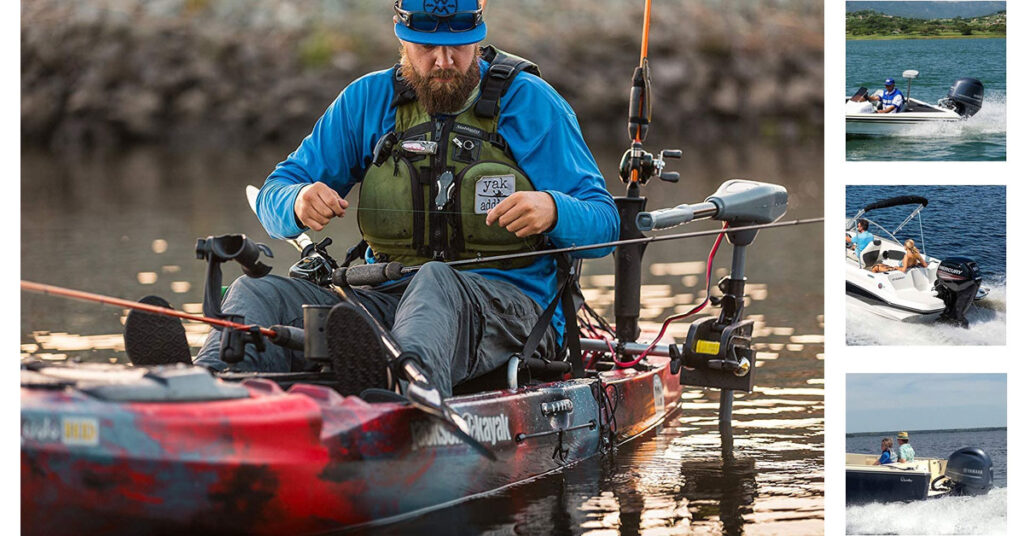
How much does a Boat Motor Cost
2 thoughts on “boat anchor chain – 11 things you should know”.
Pingback: Boat Mooring: Types And Some Safety Tips
Pingback: 7 Different Types Of Boat Anchors You Should Know
Leave a Comment Cancel Reply
Your email address will not be published. Required fields are marked *
Save my name, email, and website in this browser for the next time I comment.

What is the Best Anchor Chain – Don’t Get Swindled
by Capt Kris Baker | Mar 21, 2021

Last Updated on July 13, 2022
I recently had to replace my anchor chain on my 32′ Island Packet Southern Star. Here is the vital information that I found interesting!
Knowing what anchor chain to buy is a very valuable. I have found through my research that ACCO chain manufactured by Peerless Industrial Group – Made in the USA – is the best chain available!
The chain you buy is an investment in you and your boat’s safety and security. There is so much more to replacing the chain that going down to your local boating store and plunking down a small fortune for your boat’s lifeline.
When I started my research to buy my new anchor chain, I had no idea what manufacturer of chain was currently on the boat at that time, and the chain was attached to rope, and I wanted all chain. My list of questions were:
1. Do I really need to replace it? It was getting pretty rusty – and I wanted all chain – without rope.
2. What size anchor chain do I need? I consulted the table below to find out the size chain I needed.
3. Will my new chain fit my anchor windlass? – I looked up the manufacturer of my anchor windlass to find out the correct size.
4. Is it good quality anchor chain? I did exhaustive research on the best anchor chain available.

Is it Time to Replace?
There are a couple good point to consider when you are thinking about replacing your chain,
1. When I bring the anchor up, is there rust breaking off the chain? Does the anchor leave nasty rust stains on my deck and windlass?
2. Do some of the links look thinner than the others. Does it look like the chain is degrading?
If either or both of these conditions exist, it is time to get new anchor chain!
What Size is Right for My Boat?

The first consideration in buying your buying your new anchor chain is the size of you boat. The above chart is a good starting point. Choose what size boat you own, then look for the size chain you will need. This is the first step to choosing your new anchor chain! Pretty easy, right?

Will My New Chain Fit the Gypsy?
There are basically three types of galvanized chain; Triple B (BBB), Proof Coil, and High Test. Each chain is vastly different, which we will go into in a moment. You will need to check with your windlass manufacturer to be sure what chain will fit you gypsy (the teethy part of the windlass.) If the chain is not matched properly, the chain can get stuck and cause all kinds of problems.

Triple B, or BBB chain is available in sizes 1/4″ to 1/2″. It is a low carbon steel chain with a shorter link, ideally suited for anchoring. BBB is the second most common anchor chain behind High Test. It is not as strong as the High Test chain, but is more economical in price.

Proof Coil is the most economic choice. It is a general purpose chain that is not recommended for applications that require high strength to weight ratio. For this reason, I would not recommend ot for anchoring. It is primarily used for light towing chain, log pulling, pipe hanging, etc.

High Test Chain
High Test chain (or G4) is a highly recommended chain to use for your boat’s anchoring system. One reason is the very high working strength, also known as strenght to linkratio, high carbon steel, with an ISO short lenght link (for flexibility) which is preferred for windlass’. It is available in sizes from 1/4″ to 5/8″ The working load is twice that of BBB.
Not All Chain is Made the Same
I found, thru my reseach, that not all chain is made the same. Just because it says G4 (high test) does not mean it is not going to rust all over your deck. I have personally purchased the G4 chain thu West Marine, after being assured it was ACCO chain. ACCO chain is made in the US (see video above) and has an extra thick galvanizing process. But I did not just take West Marine’s word for it, I went ahead and called ACCO directly and they reassured me that the chain I was buying at West Marine was their chain. My friends Jason and Nikki, on Curiosity got totally screwed buying their chain, which inspired me to write this article. Below is their story, about what happened to them when they bought their chain. Here is the link to their story! https://youtu.be/F4A7AiKztTc
Buying Anchor Chain is a major improvement on your vessel, even if it does not seem like it. It is very easy to be misguided, as my friends Jason and Nikki were, or just given the wrong information.
So let’s go over the fine points of buying anchor chain.
1. Of the 3 types of anchor chain (High Test, BBB and Proof Coil) High Test is what I use on my sailboat Southern Star. It has a higher strength to link ratio, and the galvanized coating is much thicker than the other types of chain.
2. Consult the sizing chart for the appropriate size for your boat. On my 32 footer, I have G4 (high test) 5/16″.
3. Do your homework when buying the chain. When I went to replace mine, I was “told” West Marine’s high test was ACCO (in my mind the best you can get), but I double checked, for my piece of mind. At the end of the day, I can sit back, watch the sunset and know my chain is not going to break on me!

I’m Capt Kris Baker. I have been sailing and cruising since I was about 6 years old. I have lots of tips and tricks I have learned over the years, and I am happy to share them with you!
My new boat is an Island Packet 320 “Southern Star”. I plan on cruising the Bahamas and Islands south!

Buying a Used Boat?
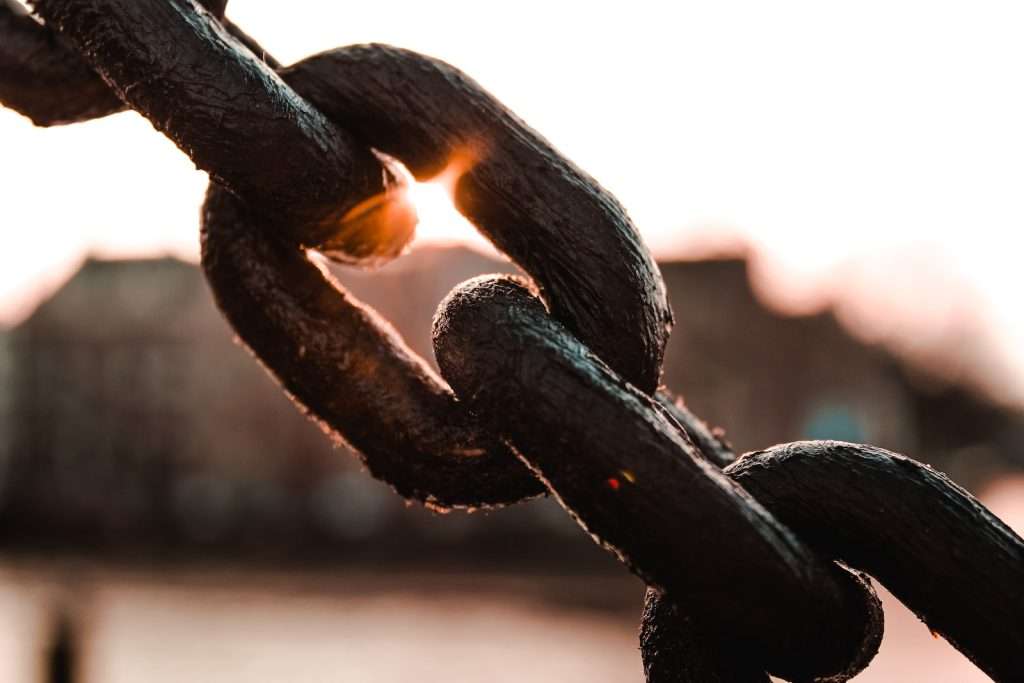
When to Change Your Anchor Chain and How to Choose the Right One
- No Comments
Ahoy, fellow sea lovers! 🌊 If you’re reading this, chances are you’re either a proud yacht owner or someone who dreams of sailing the high seas someday. Either way, welcome aboard! Today, we’re diving deep (pun intended) into the world of anchor chains. We’ll discuss when to replace them, how to choose the perfect one, and some nifty nuances you might not be aware of. So, grab your captain’s hat, and let’s set sail!

1. The Importance of a Reliable Anchor Chain
Before we delve into the specifics, let’s talk about why anchor chains are so crucial. Imagine you’re anchored in a beautiful bay, sipping on a cold drink, and enjoying the sunset. The last thing you want is to be drifting away because of a faulty anchor chain. It’s not just about keeping your boat in place; it’s about safety, peace of mind, and ensuring your vessel remains undamaged.
2. When to Change Your Anchor Chain
Like everything on your yacht, anchor chains don’t last forever. Here are some signs it’s time for a change:
- Visible Wear and Tear: If you notice any kinks, bent links, or excessive rust, it’s a clear sign your chain has seen better days.
- Difficulty in Operation: If the chain doesn’t run smoothly through the windlass or gets jammed often, consider checking it for wear.
- Age: Even if you don’t see visible signs of wear, if your chain is over 10 years old, it’s a good idea to inspect it thoroughly or consider replacement.
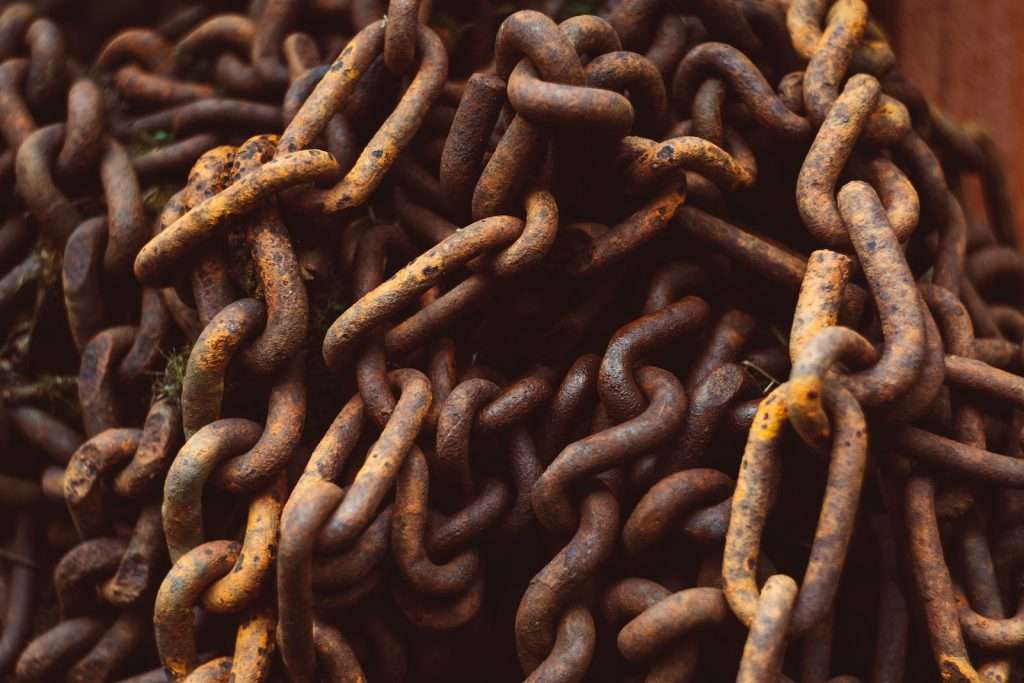
3. Choosing the Right Anchor Chain
Now, onto the fun part! Here’s what you need to consider:
- Material: The most common materials are galvanized steel, stainless steel, and high-tensile steel. Galvanized steel is popular due to its resistance to rust, while stainless steel is both rust-resistant and shiny (for those who like a bit of bling!). High-tensile steel is lighter and stronger but can be pricier.
- Size and Length: This depends on your boat’s size and the depths you’ll be anchoring in. As a rule of thumb, your chain should be at least 5-6 times the depth of the water.
- Link Type: The two main types are proof coil (round links) and BBB (short links). BBB is often preferred as it fits better in most windlasses.
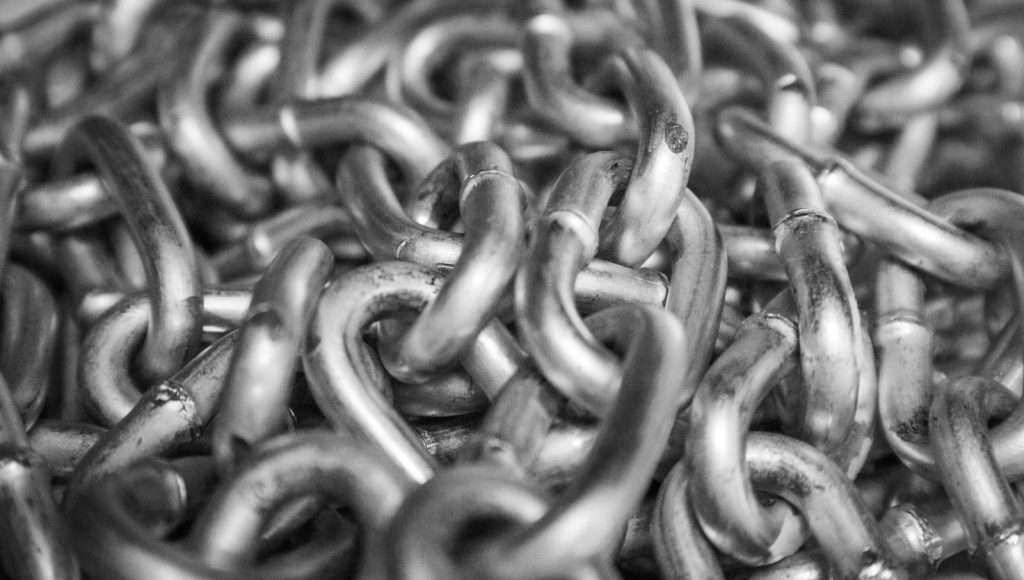
4. Nuances and Nifty Tips
- Galvanization Matters: If you opt for galvanized steel, ensure it’s hot-dipped galvanized for better rust resistance.
- Mix and Match: Some sailors use a combination of chain and rope. The chain provides weight and abrasion resistance, while the rope offers flexibility and reduces weight.
- Maintenance is Key: Regularly rinse your chain with fresh water, especially if you sail in saltwater. This simple act can significantly extend its lifespan.
5. Lifespan of Different Chain Materials
- Galvanized Steel: With proper care, expect 5-10 years. However, in harsh conditions, this can reduce to 3-5 years.
- Stainless Steel: A well-maintained stainless steel chain can last up to 15 years.
- High-Tensile Steel: Due to its strength, it can last anywhere from 10-20 years, depending on usage and maintenance.
Choosing and maintaining your anchor chain might seem like a small detail amidst the grandeur of yacht ownership. But, as any seasoned sailor will tell you, it’s these “small” details that often make the most significant difference. So, next time you’re out on the water, take a moment to appreciate that sturdy chain holding you in place. And remember, the sea might be unpredictable, but with the right equipment, you’ll always be prepared.

6. The Significance of Manufacturer Certification
One aspect that’s often overlooked but is of paramount importance is the certification of the anchor chain manufacturer. Let’s dive into why this is crucial and what it entails.
Why is Manufacturer Certification Important?
- Quality Assurance: A certified manufacturer adheres to strict quality standards, ensuring that the anchor chain you purchase is of high quality and won’t let you down in crucial moments.
- Safety: Anchor chains are responsible for holding your yacht in place, and a substandard chain can pose significant safety risks. Certified manufacturers produce chains that can withstand the forces they claim to handle.
- Longevity: Chains from certified manufacturers tend to last longer, giving you better value for your money.
Understanding Manufacturer Certification:
- Standards and Regulations: Various international bodies set standards for marine equipment, including anchor chains. When a manufacturer is certified, it means they produce chains in compliance with these standards.
- Testing: Certified manufacturers undergo rigorous testing of their products. This can include tensile strength tests, corrosion resistance tests, and more.
- Traceability: A hallmark of a certified manufacturer is the traceability of their products. Each chain will have markings that can trace it back to its batch and production details. This is invaluable if there’s ever a recall or if specific batches have issues.
- Regular Audits: To maintain their certification, manufacturers are regularly audited. This ensures they consistently meet the required standards and that the quality of their chains remains consistent over time.
When purchasing an anchor chain, always check the manufacturer’s certification. It’s not just a piece of paper or a stamp of approval; it’s a testament to the quality, safety, and reliability of the product you’re investing in. Remember, the open seas can be unpredictable, and the last thing you want is equipment that’s not up to the task. Always opt for certified quality, and sail with confidence and peace of mind.
Happy sailing, my friends! 🌊🛥️🌅
Leave a Review Cancel reply
You must be logged in to post a comment.
You may also like
Sailing spots.

Cruising a Charter Boat Around Scotland’s West Coast and the Hebrides

See the Azores from a Charter Yacht
Yachting basics.

Yacht Anodes: Everything You Need to Know
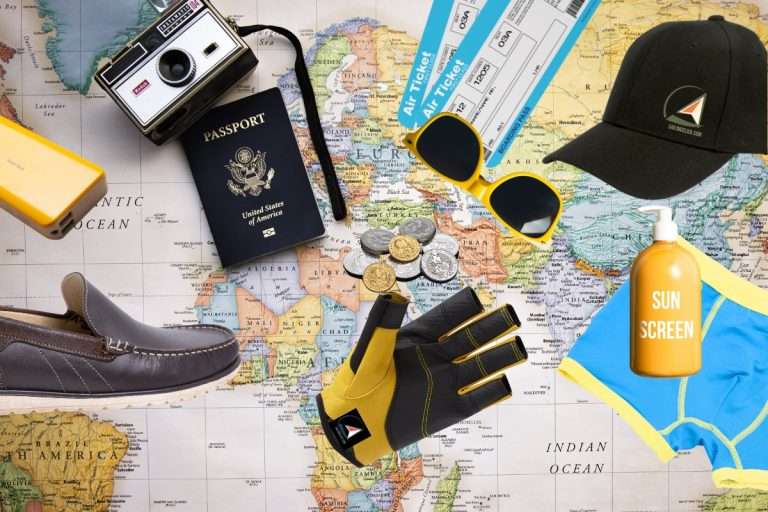
What to Take on a Yacht? The Ultimate List of Essential Items
Sailing routes.

Sailing Route in the Bahamas

Sailing Route in Croatia, from Pula along the East Coast of Istria and the Islands of Cres, Krk, Losinj.
Yacht events, sailing news.

Celebrating the New Year on a Chartered Sailing Yacht

A Cry from the Deep: The Lampedusa Tragedy Unfolds, 41 Souls Perish in Desperate Quest for Freedom
Faces in yachting.

Unforgettable Journeys: The Legendary Adventures of Sir Francis Chichester

Joshua Slocum: The Lone Mariner’s Odyssey
Boat reviews.

- TOP Charter Deals (updated)
- Advertising and Promotion
- Privacy Policy
- Cookie Policy
Please note that some links on our site are affiliate links. This means we may earn a commission at no extra cost to you if you click on them and make a purchase. We recommend products because we believe they add value, not because of the commission we receive. Your support helps keep our site running. If you have questions, please reach out to us.
Privacy Overview
Change location, find awesome listings near you.
Anchoring Made Easy: A Newbie’s Guide to Securing Your Sailboat
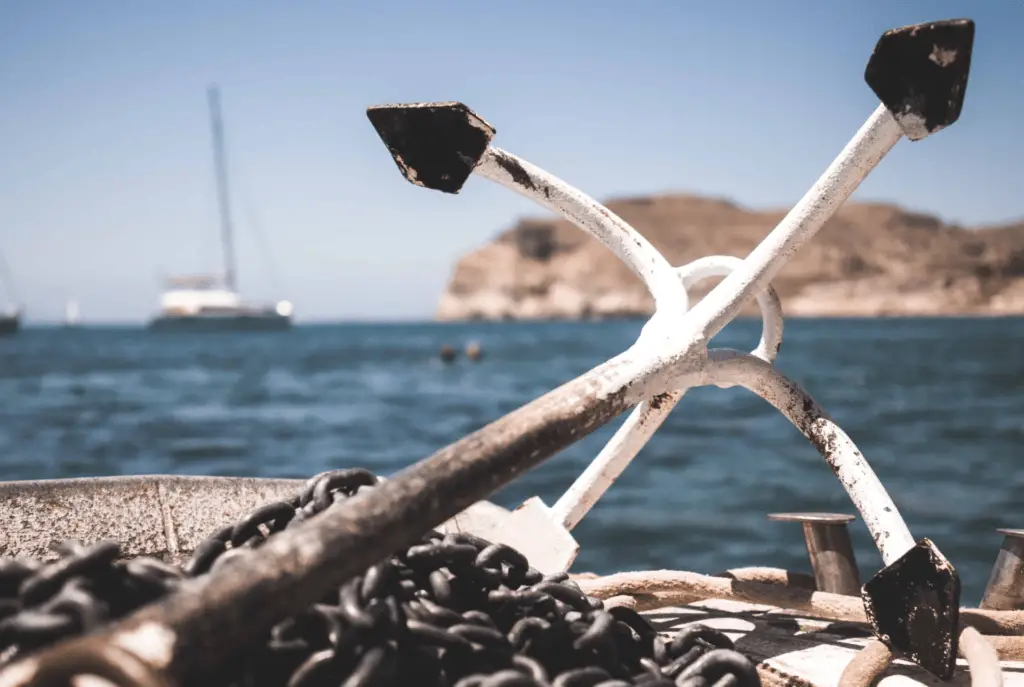
What is anchoring?
Anchoring is a fundamental aspect of boating that involves securing your sailboat in a specific location using an anchor and chain.
When you anchor your sailboat, you are essentially creating a stable and secure position for your boat, regardless of the wind or current.
Table of Contents
Can you anchor a sailboat anywhere?
No, you can’t anchor just anywhere.
- First and foremost, you need to be aware of any regulations or restrictions in the area you plan to anchor.
Some harbors, marinas, or waterways have specific rules regarding anchoring, and it’s important to respect these guidelines.
- In addition, you’ll need to consider the bottom conditions.
Anchoring in rocky or weedy areas can make it difficult for your anchor to dig in and secure your sailboat . Ideally, you’ll want to find a sandy or muddy seabed, as these provide better holding power for anchors .
- Furthermore, you should avoid anchoring in areas with heavy boat traffic.
Not only can this increase the chances of collisions, but it can also make it difficult for you to safely drop and retrieve your anchor.
Choosing the Right Anchor and Chain Size
The size and weight of your anchor will determine its ability to hold your boat securely in place, while the chain provides additional weight and strength to keep the anchor in position.
So, how do you choose the right anchor and chain size for your sailboat?
- First, consider the size and weight of your sailboat .
Larger boats require larger anchors and chains to provide adequate holding power.
As a general rule of thumb, it’s recommended to use an anchor that weighs 1 pound for every 2 feet of boat length.
So, if you have a 30-foot sailboat, a 15-pound anchor would be appropriate.
- Next, think about the type of bottom you’ll be anchoring in.
Different anchor designs work better in different types of seabeds, such as sand, mud, or rocks.
For sandy bottoms, a fluke or plow-style anchor is often recommended, while a grapnel or claw anchor is better suited for rocky bottoms.
Picking the Right Spot to Anchor
Choosing the right spot to anchor your sailboat is essential for a safe and enjoyable experience on the water. Whether you’re planning a short stop or an overnight stay, finding the perfect location can make all the difference.
So, how do you pick the right spot?
- First, consider the depth of the water.
You’ll want to find a spot with enough depth to accommodate the draft of your sailboat, plus some additional clearance to account for tides or changes in water levels.
Consult nautical charts or use a depth sounder to determine the water depth in the area you plan to anchor.
- Next, assess the bottom conditions.
Look for a sandy or muddy seabed, as these provide better holding power for anchors.
Avoid areas with rocky or weedy bottoms, as they can make it difficult for your anchor to dig in and secure your sailboat.
- Consider the surrounding environment as well.
Look for sheltered areas or natural features such as coves or bays that can protect from strong winds or currents . These areas will offer a more comfortable and secure anchorage for your sailboat.
- How Many Anchors Should You Have For Your Boat?
- The Power of Anchors: Why You Should Use Them to Keep Your Boat Safe
- Mooring Made Easy: A Step-by-Step Guide to Picking Up a Mooring for Your Boat
- How To Dock Your Boat Like A Pro: Stern-In, Bow-In, And Alongside
Preparing Your Sailboat for Anchoring
When preparing your sailboat for anchoring, there are several important things you need to do to ensure a smooth and successful docking experience.
Here are four essential tasks to complete before dropping your anchor :
1. Check your equipment: Before setting sail, make sure you have all the necessary anchoring equipment on board.
This includes an anchor, chain, and any additional gear such as a buoy or buoy line. Inspect your equipment to ensure it is in good condition and free of any damage or wear.
2. Secure loose items: Stow away any loose items on your sailboat that could become a hazard during the anchoring process.
This includes things like ropes , fenders, or loose equipment. Secure these items in designated storage areas or tie them down to prevent them from shifting or falling during anchoring.
3. Clear the deck: Remove any obstructions from your deck that could interfere with the anchoring process.
This includes items like cushions, coolers, or other personal belongings.
Clearing the deck will provide you with a clean and clutter-free area to work in when dropping anchor .
4. Prepare your crew: Brief your crew on their roles and responsibilities during the anchoring process.
Make sure everyone knows where to be and what to do when it’s time to anchor.
Assign specific tasks to each crew member, such as handling the anchor or controlling the helm, to ensure a coordinated and efficient docking experience.
The Step-by-Step Guide to Anchoring Your Sailboat
Follow these instructions, and you’ll be able to safely and effectively anchor your boat in no time.
1. Choose your anchor location
Before you start the process, select a suitable location to drop your anchor . Consider factors such as water depth, bottom conditions, and nearby hazards.
Once you’ve chosen the spot, approach it slowly and stop the boat when you’re in the desired location.
2. Prepare your anchor and chain
Make sure your anchor is ready for deployment. Remove any tangles or knots in the chain and ensure it’s securely attached to the anchor.
Double-check that the anchor is properly stored and accessible for deployment.
3. Determine the amount of anchor chain
Decide how much anchor chain you need to deploy based on the depth of the water.
A general rule of thumb is to use a ratio of 5:1 or 7:1 for the length of the anchor chain to the depth of the water. For example, if the water is 10 feet deep, deploy 50 to 70 feet of chain.
4. Drop the anchor
Carefully lower the anchor over the bow of your boat while paying out the chain.
Use a controlled speed and avoid letting the chain drop too quickly, as this could damage your boat or the anchor.
Make sure the anchor hits the bottom before releasing the chain.
5. Set the anchor
Once the anchor is on the bottom, put the boat in reverse at idle speed to ensure the anchor is firmly embedded.
Give it some time to settle and check that the boat is staying in position. Use a landmark on shore or your GPS to monitor any drifting.
6. Secure the anchor
Once you’re confident that the anchor is set, cleat off the chain or secure it to a bow cleat to prevent any accidental movement or slippage.
Double-check that the anchor is holding by slowly reversing the boat to put some pressure on the anchor.
- Congratulations! You’ve successfully anchored your sailboat. Remember to monitor your position and the anchor’s holding power throughout your stay. If you need to reposition or adjust the anchor, follow the same steps in reverse order.
How long can you be at anchor for on a sailboat?
In general, you can stay anchored for a few hours or overnight, but it’s important to check local regulations to ensure compliance.
Some areas have time limits for anchoring or require permits for longer stays.
Additionally, you’ll need to consider the weather forecast. If there are strong winds or rough seas expected, it may not be safe to remain anchored for an extended period.
What side of the vessel you should never anchor?
There is actually one side you should avoid at all costs: the bow , or the front of the boat.
Anchoring on the bow can lead to several problems and safety hazards.
Firstly, it can interfere with the boat’s steering and maneuverability, making it difficult to control the vessel in tight spaces or when approaching docks .
Secondly, anchoring on the bow can cause the boat to swing in unpredictable directions, especially when wind or currents change.
This can increase the risk of collision with other boats, docks, or hazards in the water.
To avoid these issues, always anchor your sailboat off the stern, or the back of the boat. This allows for better control and maneuverability, as well as a more stable anchoring experience.
Additionally, anchoring off the stern keeps the bow free for easy boarding and disembarking, making your sailing experience more convenient and enjoyable.
What happens when a sailboat drag anchor?
When a sailboat drags an anchor, it means that the anchor is no longer holding the boat in place.
This can occur for several reasons, such as changing wind or current conditions, a poorly set anchor, or inadequate anchor line length.
As the boat starts to drift, it can potentially collide with other boats, docks, or even run aground.
In this situation, it’s important to act quickly and calmly.
First, assess the immediate surroundings to determine any potential dangers or obstacles.
Then, try to reset the anchor by moving the boat in the opposite direction of the drift and dropping the anchor again.
If this doesn’t work, you may need to find a new anchorage or consider alternative methods, such as using a second anchor or seeking assistance from nearby boaters.

The Ultimate Guide To Anchors And Anchor Chain
You may have seen it already over July 4th weekend: a boater going for his/her ground tackle in a hurry only to be stopped by knots, tangles, or an anchor that is not connected properly.
Embarrassment and inconvenience aside, mismanagement of your anchoring system has the potential to cause serious damage. Besides the obvious use of anchoring up at the sandbar, an anchor also serves as an emergency brake. When you need it, you need it right away, and it must work for you. Failure is a dangerous non-option, so in these two articles we will discuss how to keep you safe and your “e-brake” in working order.
What makes up your anchoring system?
Let’s start with what should be a refresher for most of us: some anchoring system terms. These terms are part of the vocabulary we need for discussing anchors. We will also highlight the components of the anchoring system and share tips and rules of thumb to help with anchoring product selection and best practices.
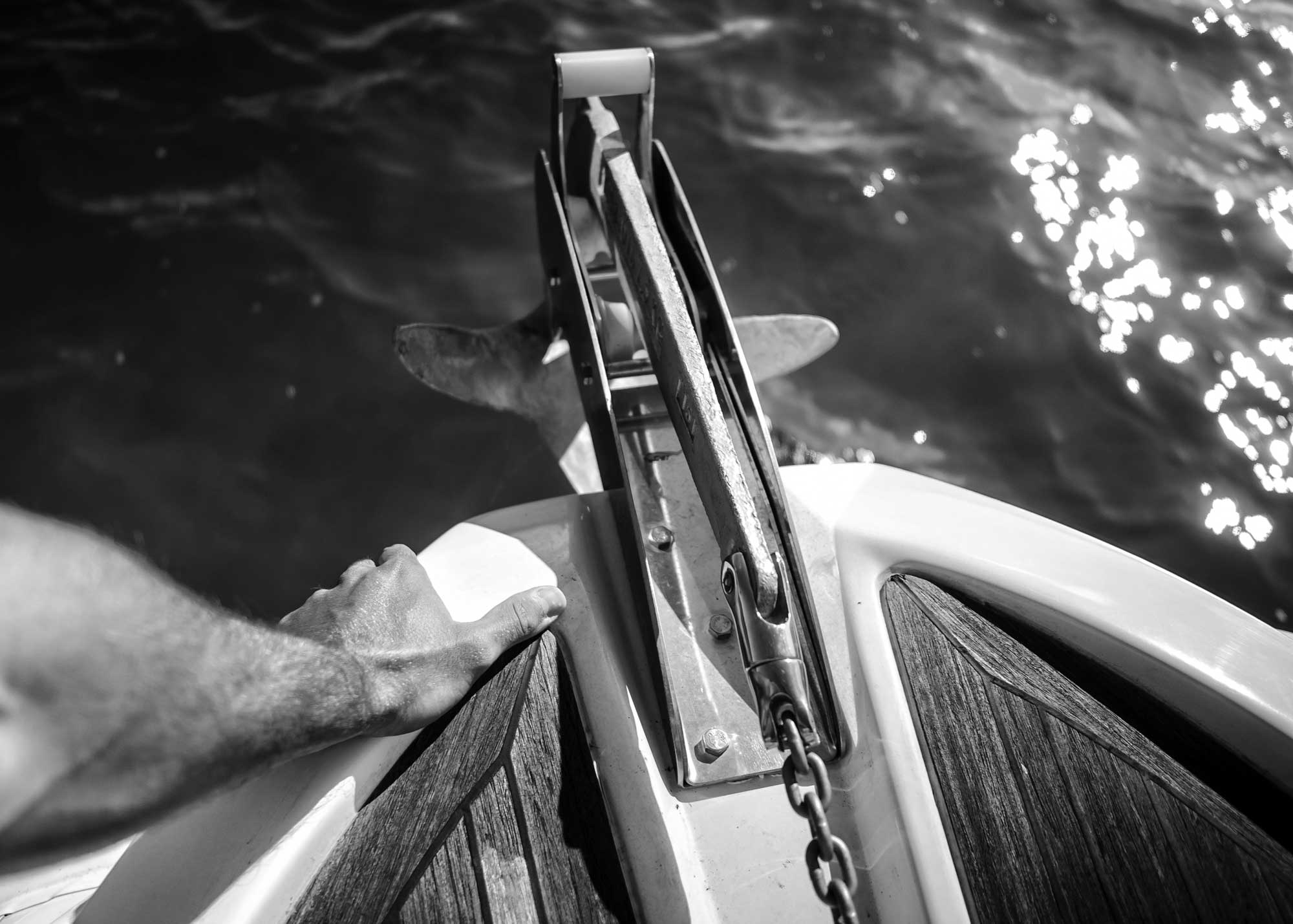
The length of galvanized metal links used to connect the anchor to the rode. The most common chain coil is BBB rated with thicker, shorter links that are stronger than standard proof chain. Chain is used for its weight and chafe protection. The chain helps the anchor to set and the rode to lie horizontally.
The long length of nylon rope with an eye splice and thimble which is attached to the anchor chain.
Anchor line comes in three-strand, braided, or 8-plait styles. The three-strand variety is popular with boaters because it absorbs shock better than braided and is less likely to fray or get cut on rocks or jagged bottoms.
Anchor line is available in various diameters and lengths depending on your boat. The larger the boat, the wider and longer the anchor line required. There are many options to consider when picking your anchor rope.
The anchor line and anchor chain combined.
Anchor Shackle
The metal load-bearing connector between the anchor chain and the anchor.
Choose a high-quality shackle that can withstand stress. Hot dip galvanized metal shackles are the most sturdy and durable.
A pivoting metal connector that some boaters install next to the anchor shackle.
Swivels are designed to release the twist in the anchor chain as it comes onboard so it will flake into the locker more easily and be ready to redeploy rapidly. Swivels are a hotly debated topic among boaters due to the potential for catastrophic failure of the swivel under high loads.
An additional length of line attached to the anchor chain and deck mooring hardware.
Snubbers help absorb shock while anchored in swells or high-wake areas. This takes strain off the windlass and deck. Snubbers are commonly used on boats deploying all-chain rodes.
Ground Tackle
All anchoring related equipment including the anchor, anchor chain, anchor line, shackles, and connectors.
The ratio of the length of anchor rode deployed to the vertical distance between the sea floor and the point where your anchor rode comes on board.
Aim for a 5:1 scope ratio minimum, although a 7:1 ratio is preferable given the room. The lower the ratio, the greater the chance your anchor may drag.
Holding power
The amount of pull force an anchor can withstand while remaining set.
Holding power is expressed in pounds and can be measured with a strain gauge. Heaver anchors and anchors with large fluke areas tend to have higher holding power.
Metal weight of any kind that is attached at some point along your anchor rode.
This ballast weight is also known as an anchor buddy/rider/chum/angel. The weight of the kellet used depends on the size of the boat. Kellets are a controversial and debated solution designed to help anchors set and avoid dragging as well as to dampen the surge from swells or wake.
The curve of the anchor rode between the boat and the anchor.
A low angle of pull on the anchor maintains the catenary curve and provides energy absorption. Due to their weight, chain rodes have good catenary curves in light to medium winds, however in strong winds, the chain goes taut and loses its curve, offering no energy absorption.
Setting The Hook: Things To Consider When Selecting An Anchor
With all the anchoring system components fresh in our minds, it is time to apply them and select the right anchor . Three variables to consider during anchor selection are:
As a rule, your anchor chain should be at least as long as your boat, but no shorter than 10 to 15-feet. Your anchor line length will depend on anchoring depth. If you will be anchoring in deeper water, you will need enough rode to achieve a proper scope ratio. The rule of thumb is to plan 8-feet of line per 1-foot of anchoring depth.
Where you anchor makes a difference. What are the currents, winds, and tides like? Will you be anchoring in protected waters? Select your anchoring equipment based on the type of locations and conditions in which you will be deploying your anchor.
Do you have a clean bottom? What does your bottom surface consist of? This determines not only holding power but also what anchor works best for the bottom you are anchoring in. Some anchors like a pivoting-fluke or non-hinged scoop do well in sand while others with broad flukes are best in mud. Consider a plow-shaped or grapnel anchor to dig into rocky bottoms and a heavy anchor for difficult shale, clay, and grass bottoms.
Anchor Types and Uses
Anchors come in six different types, and as we learned, the best anchor for you will depend on your boat, your location, and the sea bottom. Whichever type of anchor you choose, ensure you consult manufacturer guidelines to select an anchor weight that is heavy enough for your boat. The six types of anchors are:
Three claws help the claw or Bruce anchor dig into most types of bottoms, including rock. Note that you need a heavier anchor for your boat size to get a good set. The lower price of a claw anchor makes it a common choice with recreational boaters.
Danforth/Fluke
Pivoting flukes help this anchor bury itself in soft bottoms with grass or mud. A Danforth, or fluke type of anchor stows flat and is often used in smaller boats where space is at a premium.
The fixed upright flukes of the grapnel dig into many bottom types and offer a better hold than a standard fluke anchor in harder bottoms. A light version of a grapnel anchor can be a good choice for smaller boats.
The rounded bottom of a mushroom anchor simply rests on the seabed, making it best for small craft, canoes, and kayaks in waters with flat, even sea bottoms.
The sharp point of a plow anchor digs into rocky bottoms or those covered in grass and weeds. Plow anchors may also be called CQRs or wing anchors. They are common on larger boats that are anchoring in varying conditions and types of sea bottoms.
The newest anchor type – the scoop – works in many bottom types and has high holding power. Scoop anchors are designed to be easier to set and reset than other anchor types. Scoops are available in Rocna, Spade, or Manson configurations.
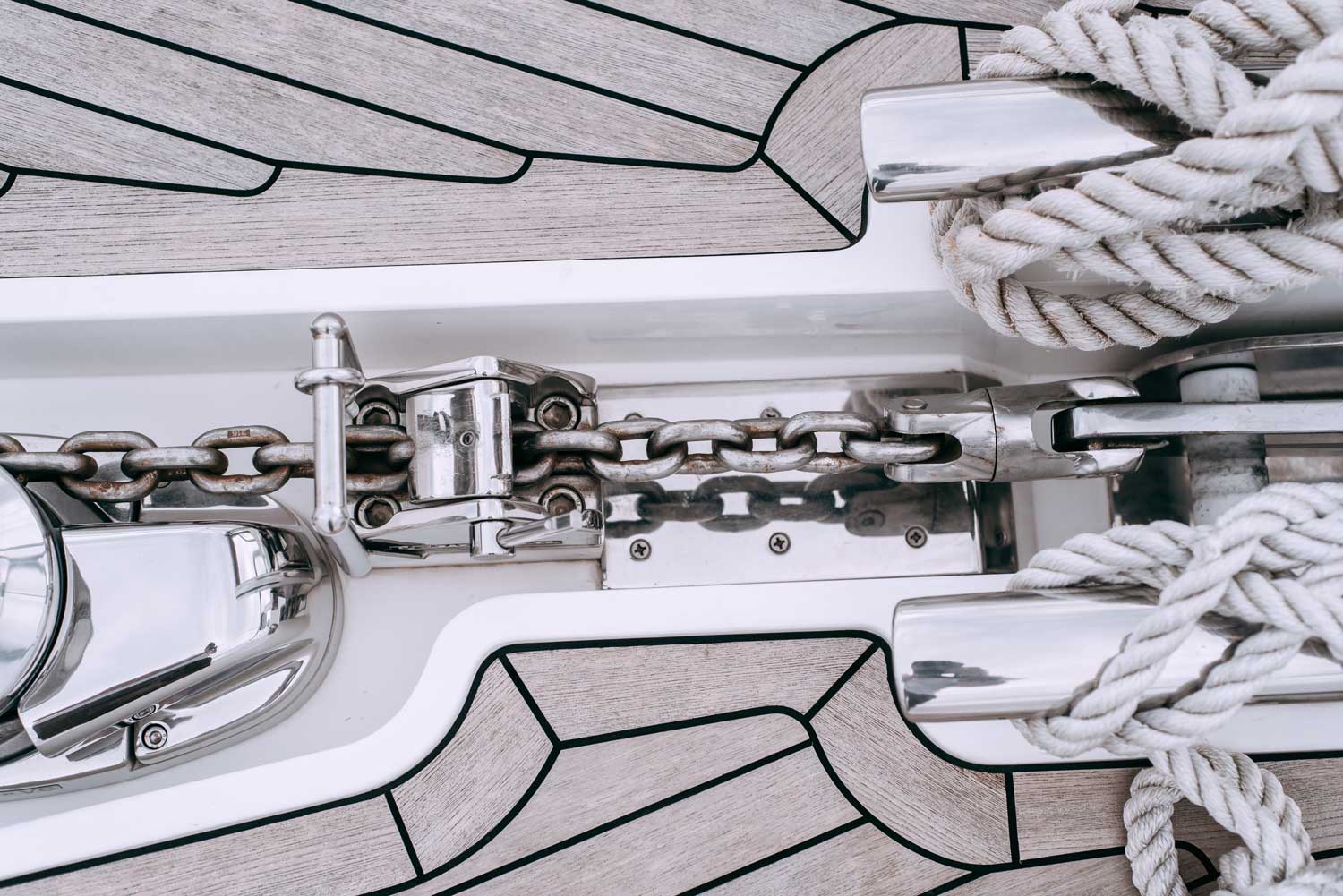
Most Common Anchoring Mistakes
Time to learn from others’ mishaps. Watch out for these common errors that boaters make when selecting or deploying their anchoring system:
- Not securing the bitter end of the anchor line – usually seen on smaller day cruisers
- Improperly sized anchor for size of boat or conditions
- Wrong anchor for sea bottom
- Not enough scope
- Not enough chain
The Takeaways
Your boat’s anchoring system is like the emergency brake on a vehicle. When you need it, you can’t afford for it to fail. Set yourself up for anchoring success by outfitting your boat with the proper anchor, rode, and other components for the boat size, boating location, and type of sea bottom you expect to anchor in.
When you get ready to anchor, confirm your anchor line is properly secured to the boat and set with sufficient scope so the anchor won’t drag. Following these basic guidelines will help ensure your time on the water is as safe as possible.

Marine Anchor Chain – A Complete FAQ Guide
Table of contents.
Anchor chains play an essential role in the marine industry – with them, ships and vessels can stay safe and securely halted throughout their journey. If you want all the essential information regarding an anchor chain and how it works, this is the perfect place to start.
This FAQ guide will provide a comprehensive idea of the advantages, types, and other details of marine anchor chains.
1. What is a Marine Anchor Chain?

Figure 1 Marine Anchor Chain
Marine anchor chains keep your ships safe. This heavy-duty chain is made to withstand the rough conditions out at sea: salt water, changes in temperature and salinity, and extreme pressure changes due to waves or rapid currents.
An anchor chain helps ensure that vessels stay in one place – whether used for travel, recreation, commercial fishing, or cruising. The chain is constructed from thick steel links connected using pins.
In some cases, additional pieces, such as shackles, might be added to parts of the chain for enhanced safety and strength. This chain is essential to make sure you can confidently head out onto the open ocean without worrying about getting swept away!

Figure 2: Chain Parts
2. What is the Importance of the Marine Anchor Chain?
A marine anchor chain – also known as an anchor rode – is a crucial component of the vessel’s anchoring system. Its purpose is to securely attach the anchor to a part of the boat so that it may be quickly and easily lifted in times of need.
Furthermore, this chain plays an essential role in deflecting specific forces away from the anchor head and main structure. When faced with extreme weather conditions such as storms or strong currents, a ship or offshore rig may tilt and heel uncontrollably, severely damaging its hull if not adequately protected.

Figure 3: Anchor Chains
Anchor chains are designed to absorb pressure placed on them, reducing the force exerted upon them. It allows for a potential decrease in damage caused by heavy weights as anchor chains and cables are manufactured to withstand substantial forces without harm or distortion.
3. Write Some Benefits of Using Marine Anchor Chain?
Marine anchor chains are a lifesaver in keeping a vessel safe while it is out at sea. The chain connects the ship and the anchor, ensuring the boat remains safe from harm. Anchor chains are incredibly strong, allowing your boat to remain stationary amidst all weather conditions. Not only do they offer maximum strength, but they also feature an impressive level of corrosion resistance due to their construction with high-grade steel.

Figure 4: Anchor Chain in Water
In addition to this, marine anchor chains do not need to be replaced frequently like some other materials, making them cost-effective in the long run.
4. What are the Important Factors to Consider While Selecting the Marine Anchor Chain?
When selecting or creating the anchor chain, several essential elements must be considered.
- Firstly, the highest permissible load should be taken into account.
- Secondly, storage ease must be considered.
- Finally, the rode’s expected length should also be considered when selecting an anchor chain.
When it comes to rode designs, it is essential to factor in convenience and ease during storage. Anchor chains need to be placed away carefully so that the hull of the boat is not damaged as a result of an anchor chain being left hanging down too much or entangling itself with other elements around it.
Every ship or offshore station has a good understanding of the depths of their working areas and can therefore determine the length at which the anchor rode should be securely attached.
The scope is a ratio that expresses the relationship between the amount of anchor rode paid out to the actual depth of the water body. It reflects a balance between how much vertical force an anchor exerts on a vessel and how much drift it experiences.
The scope of a ship’s anchor chain will usually range from a 5:1 to a 7:1 ratio, meaning that for every one foot of depth in the water, there will be five to seven feet of anchor line. Shorter chains are better at holding the vessel in place since they contain less slack, which helps prevent the waves’ natural motions from moving the boat away.
When the chain is released, and the angle between the anchor rode, and the bottom of the vessel is greater than 90 degrees, any sudden impacts or jerks are quickly transferred to both the rode and boat. This means that a more extensive range of motion can be achieved, and any force acting on the boat will begin to reduce in intensity. As a result, this allows it to drift into an area far more expansive than initially anticipated.
Check the video for some important tips to choose the right anchor chain:
5. Why Can You Use Cable and Anchor Chains Combination?
If the design of a system involves both, it may be able to overcome some of the issues that arise due to the large number of variables involved in each design.

Figure 5: Combination of Chain and Cable
A cable and chain rode combination is commonly used in large cruise ships and offshore structures. This concept works because the chain components of the anchor rode are more suitable for use in areas with rougher seabeds, where cables cannot be used. The steel links within the chain sections have a higher tensile strength required to resist pulling force on the anchor and the ship, thus preserving the integrity of its position.
A typical anchor rode consists of a length of cable, usually made up of galvanized steel or stainless steel wire rope, connected to a short section of chain and then onto an anchor stock. For this reason, joining both types of rodes necessitates utilizing specialized techniques. It is at this junction between cable and chain where most failures occur due to its heightened fragility.
The junction between the cable and chain is covered with a galvanized connection, allowing for a secure and reliable interlocking of the two elements. The cable fibers are partially linked to the chain, creating an even stronger bond. It is further enhanced by being able to connect the cable to the chain as well directly.
Using this combination of cable and chain has numerous advantages. However, if not using such a combination in such conditions, then the single heavy chained element won’t stay on the seafloor due to its lack of weight anchoring it down. In addition, due to its sturdiness when connected, this combination can easily withstand strong waves or winds without coming apart or getting displaced from its anchored position at the seabed.
6. What is Marine Anchor Chain Marking?
The importance of an anchor chain’s scope cannot be understated, as it is necessary to maintain a balance between the movements of the vessel and the strain that is placed on the cable or chain during anchoring. This means it is absolutely essential to be aware of how much anchor rode has been used. To this end, painted sections and plastic markers are strategically positioned along the anchor rode in order to help those involved in anchoring operations, such as the operator, identify quickly how much rope they have put into use.
Compared to traditional painting and other methods of marking the water, plastic rope markers have the advantage of having a longer life on the seas. The paid-out rope length can be typically shown by colored zip ties having different knots at various uniform intervals. These intervals lie between 25 feet and 7.5 meters.
As part of nautical norms, the colors used for length indicators tend to be white, red, and blue. Moreover, they can disintegrate if they come into contact with tethering spools and hawse pipes frequently.
7. How to Store Marine Anchor Chain Properly?
The anchor chain serves an essential purpose in providing extra stability to the anchor, which is often made of metal. But due to being exposed to the harsh environment, these materials are prone to rust and wear over time, making them increasingly vulnerable. This is why it’s essential that when boats bring their anchors back onboard, they must scrutinize them for any signs of damage.
For this, appropriate storage facilities must be constructed so that the rode may be quickly retrieved for maintenance.
Inside the ship’s hull lies the chain locker: an enclosure specially designed to provide ventilation and store anchor chains when they are not in use. This space is typically reinforced with additional materials to support the heavy load of the metal rope and accompanying anchor that is often stored there. As needed, engineer staff can access the locker for regular inspections or maintenance services.
The locker itself is strong enough to withstand immense pressure and strain exerted by the heavy weight of the chain and its elements. Its walls are often made from thick steel plates or reinforced concrete, ensuring it will remain secure during harsh ocean conditions.

Figure 6: Chain Locker Location
It is critically important that the anchor storage equipment on a vessel is set up incorrectly, as it can lead to considerable danger if mechanical problems occur with the windlass. This windlass may offer power to raise or lower the anchor chain, so having an organized arrangement of port and starboard side anchors is essential. If this equipment is not set up correctly, there could be an unforeseen issue with the raising and lowering of the anchor chain.
Marine Cable
- Marine Power Cable
- Marine VFD Cable
- Marine Telephone Cable
- Marine Flex Wire
Offshore Cable
- Offshore Power Cable
- Offshore VFD Cable
- Instrumentation Cable
- Offshore Wire
More Products
Quick Contacts
NO.1299, East Section of Yinxian Avenue,Yinzhou Dist, Ningbo, Zhejiang, China
- The Sailor's Comprehensive Handbook: Mastering the Art of Anchoring from Snubbers to Chains
Anchoring a boat or yacht is both an art and a science, and no, it's not just about throwing some heavy metal overboard and hoping for the best. What is an anchor snubber? Why is it important to understand the art of anchoring? Whether you're new to boating or a seasoned sailor, this article aims to be your comprehensive guide. From anchor snubbers to anchor bridles, yacht anchors to sailing anchors, we will delve into it all. Strap in!
Snubbers: What Are They and Why Do You Need Them?
Snubbers: the unsung heroes of your anchoring system. Acting as shock absorbers, snubbers help to ease the stress exerted on your boat, anchor, and chain by wind and waves. They are a must-have in any serious sailor's toolkit, providing a sense of security when mooring your vessel.
Types of Snubbers
When it comes to snubbers, variety is the name of the game. Primarily, you'll find two types—chain snubbers and line snubbers. Chain snubbers are generally heavier and more durable, whereas line snubbers offer more elasticity and are lighter, making them easier to handle. Each type has its pros and cons, which we'll explore in depth later.
Anchor Snubber: What is it?
Role in anchoring.
Imagine you're the rope in a tug-of-war game. You're pulled from both ends and subjected to enormous pressure. Now, insert an elastic band in the middle of that rope. The stress would distribute better, wouldn't it? That's precisely what an anchor snubber does. It acts as the "middleman" that eases the tension between your boat and the anchor chain, especially under adverse weather conditions.
A typical anchor snubber comprises a length of rope, usually made of a high-strength material like nylon, and often includes a chain hook. This setup allows the snubber to attach securely to the anchor chain, reducing the direct pull on your boat's structure and fittings.
How To Anchor A Boat
Pre-anchoring checks.
Before you dive into anchoring, first take stock of your surroundings. Check the weather forecasts, assess wind conditions, and know the water depth. Your boat's GPS and depth finder will come in handy here. Ignoring these checks is like going into a battlefield blindfolded—a rookie mistake you'd rather not make.
The Anchoring Process
Anchoring a boat is a multi-step process that begins with selecting an appropriate anchoring spot. Once you have found the ideal location, lower the anchor smoothly while letting out the chain. After you think the anchor has settled, let out more chain and attach the snubber. Finally, slowly reverse your boat to set the anchor firmly into the seabed. It's a delicate dance that requires keen attention to detail.
Anchor Bridle: Another Level of Anchoring
Definition and function.
If an anchor snubber is your anchoring system's shock absorber, consider the anchor bridle to be its stabilizer bar. It serves a similar function to a snubber but provides a balanced distribution of the load across two points on your boat. This adds an extra layer of stability, especially crucial for larger boats like yachts.
How to Use It
Setting up an anchor bridle is straightforward. Attach the two ends of the bridle to strong points on either side of your boat's bow. Then hook the bridle to your anchor chain using a chain hook or shackle. Now you've got a robust system that can withstand the trials and tribulations of the open sea.
Yacht Anchors vs. Sailing Anchors
At first glance, you might think an anchor is an anchor, right? Wrong. Yacht anchors and sailing anchors may serve the same basic purpose, but they are as different as chalk and cheese. Yacht anchors are generally heavier, more robust, and designed to hold much larger vessels. On the other hand, sailing anchors are built for agility and are usually lighter.
Importance of Choosing the Right Anchor
Think of your anchor as a mountain climber's pickaxe. It's your primary support and must be suited to the terrain—or in this case, the type of boat you have. Using the wrong type of anchor could lead to drifting, or worse, your boat could break free, resulting in potential damage or loss.
How Does an Anchor Work?
Basic principles.
The underlying principle of how an anchor works is relatively straightforward—it digs into the seabed to create resistance, thereby holding your boat in place. But it's not just the anchor that does all the work; the anchor chain also plays a significant role. The weight and length of the chain help in setting the anchor deep into the seabed, providing an added layer of security.
Common Mechanisms
You'll find several types of anchors on the market, such as fluke, plow, and claw anchors. Each has its unique mechanism and suitability for different seabeds. Fluke anchors are great for sandy and muddy bottoms, plow anchors excel in rocky and grassy conditions, while claw anchors offer a good all-around performance but may not excel in any particular type of seabed.
Anchor Chain Hook: The Little-known Helper
Also known as the anchor chain connector, the anchor chain hook is a small but vital piece of equipment. Its main role is to attach your snubber or bridle to your anchor chain securely.
Uses in Anchoring
The chain hook might be small, but its importance is anything but. It ensures that the snubber or bridle stays in place, effectively transferring the load and preventing any potential weak points in your anchoring system.
Sailing Anchors: Special Requirements
What sets them apart.
Sailing anchors are generally designed with mobility in mind. They are lightweight and easy to maneuver, which makes them ideal for smaller sailing vessels that don't have the horsepower to lug around a heavy anchor.
Best Practices
When choosing a sailing anchor, go for one that is corrosion-resistant and designed for various seabeds. You never know where your sailing adventures might take you, so it's better to be prepared for all eventualities.
How Much Anchor Chain Do You Need?
Length vs. depth.
When it comes to determining how much anchor chain you need, the key factor is the depth of the water. A commonly used rule is the "5:1 scope," meaning you need five times the length of chain as the depth of the water. But remember, this is a rule of thumb and should be adjusted based on other conditions such as wind and currents.
Factors to Consider
There are other variables to consider too, like the weight of your boat, the type of seabed, and even the local tide. And let's not forget the 'snubbing' element. A longer chain means your snubber will have to work less, and this can extend the life of your anchoring system.
Read our top notch articles on topics such as sailing , sailing tips and destinations in our Magazine .
Anchor Chain Size: Importance and Considerations
Diameter and link types.
Choosing the right chain size is not just about length. The diameter and the type of links are also crucial factors. A chain with too small a diameter may not be strong enough to hold your boat, especially in challenging conditions. Also, be mindful of the link type; calibrated chains are usually the best choice as they fit most windlasses.
Significance in Anchoring
A mismatch in chain size could compromise your entire anchoring system. Too heavy a chain for a light boat could lead to poor setting of the anchor, while a chain that's too light might snap under pressure, leading to potentially dangerous situations.
Line Snubber: Alternative to Chain Snubbers
Definition and role.
Line snubbers are made from high-strength nylon and are generally used for lighter boats or as a temporary anchoring solution. They offer excellent elasticity, making them an effective shock absorber in turbulent conditions.
When to Use It
Line snubbers are perfect for smaller boats or dinghies and can also be used as a backup for your primary snubber. However, for larger boats or more permanent anchoring solutions, a chain snubber is generally recommended.
Common Mistakes in Anchoring
Misjudgment of depth.
This mistake is more common than you'd think. Always use accurate depth measurement tools to avoid this blunder. Remember, the water may look shallow, but appearances can be deceiving.
Wrong Type of Anchor Used
From fluke anchors to plow anchors, each type has its specific uses. Using the wrong kind of anchor can lead to inefficient anchoring, and in the worst case, your boat drifting away.
Whether you're a weekend sailor or a maritime aficionado, understanding the intricacies of anchoring—snubbers, anchors, chains, and all—is indispensable. It's more than just dropping a piece of metal into the sea. It's about understanding the mechanics, the types, and the techniques that ensure you, your boat, and everyone on board remains safe and secure.
Armed with this knowledge, you're now better equipped to tackle the challenges and joys that come with anchoring a boat. So go ahead, set sail and anchor away, but do it wisely.
So what are you waiting for ? Take a look at our range of charter boats and head to some of our favourite sailing destinations .
FAQs: Anchoring
It's a device that acts as a shock absorber between your boat and the anchor chain, reducing stress and potential damage.
Different anchors are suited for different types of seabeds and boat sizes. Choosing the wrong type can lead to ineffective anchoring.
It's similar to a snubber but distributes the anchoring load across two points on your boat, offering enhanced stability.
The general rule is a 5:1 scope, but this can vary based on several factors such as boat weight, seabed type, and weather conditions.
Misjudging the water depth and using the wrong type of anchor are common errors that can lead to ineffective anchoring or even accidents.
🚚 FREE US SHIPPING ON ORDERS OVER $25 🚚

Boat Anchor Chain

Marine Grade Stainless Steel Anchor chains or Galvanized Steel comes with two separate thick 316 Stainless Steel or Galvanized bow shackles complementing almost all anchor style options and anchor ropes. Upgrade your old anchor chain with our premium long-lasting boat anchor chains. Try them risk free for 30 days - love them or get your money back!
MORE DETAILS
- Premium Construction: Marine Grade stainless anchor line is made from 316 Stainless Steel or available in Galvanized Steel. Unlike the old cheap chain alternatives, these boat anchor chains are designed to last and avoid corrosion. Each chain comes with 2 bow shackles.
- Safe and Reliable: The chain is abrasion resistant and weighted to properly keep your anchor shank parallel with the sea floor. The chain in Stainless Steel 3/16" offers a working load of 750lbs and break load of 3000lbs. In 1/4" offers a 5,110 break load and shackles a 5,510 break load and the 5/16" chains offers a 7450lbs break load while the shackles offer a break load of 9480 lbs. The Galvanized versions in 3/16" have a working load of 2,500lbs and breaking of 5,000lbs. 1/4" has working load of 1500lb and breaking load of 3000lbs and 3/16" has a 750lb working load and 1500lb breaking load.
- Compatibility and Flexibility: Designed to work with almost all anchor rope. The 3/16" and 1/4" anchor chain measures 4 ft long and the 5/16" chain measures 5 ft long.
- Easy Seamless Upgrade: Whether you're looking for more reliable marine anchor chains, or outfitting a new boat, this is your solution. If you're interested in getting a boat anchor and boat anchor chain duo, check out our complete boat anchor kit !
- Money Back Guarantee: Try these stainless steel anchor chains risk-free for 30 days, if you don’t love them - get a full refund!
- choosing a selection results in a full page refresh

Currency: GBP
- Worldwide Delivery
Mooring Warps and Mooring Lines
- LIROS 3 Strand Polyester Mooring Warps
- LIROS Braided Dockline Mooring Warps
- LIROS Classic Mooring Warps
- LIROS Green Wave 3 Strand Mooring Warps
- LIROS Handy Elastic Mooring Warps
- LIROS Moorex12 Mooring Warps
- LIROS Octoplait Polyester Mooring Warps
- LIROS Polypropylene Floating Mooring Warps
- LIROS Super Yacht Mooring Polyester Docklines
- Marlow Blue Ocean Dockline
Mooring Accessories
- Mooring Cleats and Fairleads
- Mooring Compensators
- Mooring Shackles
- Mooring Swivels
Mooring Strops
- LIROS 3 Strand Nylon Mooring Strops
- LIROS Anchorplait Nylon Mooring Strops
- Small Boat and RIB Mooring Strops
Mooring Bridles
- V shape Mooring Bridles
- Y shape Mooring Bridles
Mooring Strops with chain centre section
- 3 Strand / Chain / 3 Strand
- Anchorplait / Chain / Anchorplait
Bonomi Mooring Cleats
- Majoni Fenders
- Polyform Norway Fenders
- Dock Fenders
- Fender Ropes and Accessories
- Ocean Inflatable Fenders
Mooring Buoys
Max power bow thrusters.
- Coastline Bow Thruster Accessories
50 metre / 100 metre Rates - Mooring
Mooring information.
- Mooring Warps Size Guide
- Mooring Lines - LIROS Recommended Diameters
- Mooring Rope Selection Guide
- Mooring Warp Length and Configuration Guide
- How to estimate the length of a single line Mooring Strop
- Mooring Ropes - Break Load Chart
- Mooring Compensator Advisory
- Rope Cockling Information
- Fender Size Guide
- Majoni Fender Guide
- Polyform Norway Fender Inflation Guide
Custom Build Instructions
- More Article and Guides >
Anchor Warps Spliced to Chain
- LIROS 3 Strand Nylon Spliced to Chain
- LIROS 3 Strand Polyester Spliced to Chain
- LIROS Anchorplait Nylon Spliced to Chain
- LIROS Octoplait Polyester Spliced to Chain
Anchor Warps
- Leaded Anchor Warp
- LIROS 3 Strand Nylon Anchor Warps
- LIROS 3 Strand Polyester Anchor Warps
- LIROS Anchorplait Nylon Anchor Warps
- LIROS Octoplait Polyester Anchor Warps
- Aluminium Anchors
- Galvanised Anchors
- Stainless Steel Anchors
Calibrated Anchor Chain
- Cromox G6 Stainless Steel Chain
- G4 Calibrated Stainless Steel Anchor Chain
- Lofrans Grade 40
- MF DAMS Grade 70
- MF Grade 40
- Titan Grade 43
Clearance Chain
Anchoring accessories.
- Anchor Connectors
- Anchor Trip Hooks and Rings
- Anchoring Shackles
- Bow Rollers and Fittings
- Chain and Anchor Stoppers
- Chain Links and Markers
50 / 100 metre Rates - Anchoring
Chain snubbers.
- Chain Hooks, Grabs and Grippers
- Chain Snubbing Bridles
- Chain Snubbing Strops
Drogue Warps and Bridles
- Lewmar Windlasses
- Lofrans Windlasses
- Maxwell Windlasses
- Quick Windlasses
Windlass Accessories
- Coastline Windlass Accessories
- Lewmar Windlass Accessories
- Lofrans Windlass Accessories
- Lofrans Windlass Replacement Parts
- Maxwell Windlass Accessories
- Quick Windlass Accessories
Anchoring Information
- How To Choose A Main Anchor
- Anchoring System Assessment
Anchor Chain and Rope Size Guide
- The Jimmy Green Guide to the Best Anchor Ropes
- What Size Anchor Do I Need?
- Anchor Size Guides
- Anchor Rope Break Load and Chain Compatibility Chart
- How to Choose Your Anchor Chain
- How to Establish the Correct Anchor Chain Calibration?
- Calibrated Anchor Chain - General Information
- Calibrated Anchor Chain Quality Control
- Calibrated Chain - Break Load and Weight Guide
- Galvanising - Managing Performance and Endurance expectation
- Can Galvanised Steel be used with Stainless Steel?
- Windlass Selection Guide
- More Articles and Guides
Stainless Steel Wire Rigging and Wire Rope
- 1x19 Wire Rigging
- 7x19 Flexible Wire Rigging
- Compacted Strand Wire Rigging
- Insulated 1x19 Wire Backstays
Wire Rigging Fittings
- Swaged Terminals
- Swageless Terminals
- Turnbuckles / Rigging screws
- Turnbuckle Components
- Backstay Insulators
- Wire Terminals
Rigging Accessories
- Backing Plates
- Backstay Adjuster and Fittings
- Backstay Blocks
- Pins, Rings and Nuts
- Rigging Chafe Protection
Fibre Rigging
- DynIce Dux Fibre Rigging
- LIROS D-Pro Static Rigging
- LIROS D-Pro-XTR Fibre Rigging
- Marlow Excel D12 MAX 78 Rigging
- Marlow M-Rig Max Rigging
Fibre Rigging Fittings
- Bluewave Rope Terminals
- Colligo Marine Terminals
Dinghy Rigging
- Dinghy Rigging Fittings
- Fibre Dinghy Rigging
- Stainless Steel Dinghy Rigging
Wind Indicators
Guard wires, guardrails and guardrail webbing.
- Guard Rail Fittings
- Guard Rails in Fibre and Webbing
- Guard Wire Accessories
- Guard Wires
Furling Systems
- Anti-torsion Stays
- Headsail Reefing Furlers
- Straight Luff Furlers
- Top Down Furlers
Furling Accessories
- Continuous Furling Line Accessories
- Furling Line Accessories
50 / 100 metre Rates - Wire and Fibre
Standing rigging assistance.
- More Articles and Guides >
- Cruising Halyards
- Performance Halyards
- Dinghy Halyards
Rigging Shackles
- Bronze Snap Shackles
- Captive and Key Pin Shackles
- hamma™ Snap Shackles
- Selden Snap Shackles
- Soft Shackles
- Standard Snap Shackles
- Tylaska End Fittings
- Wichard Snap Shackles
Lashing, Lacing and Lanyards
- LIROS 3 Strand Lashing, Lacing and Lanyards
- LIROS Braided Lashing, Lacing and Lanyards
- Cruising Sheets
- Performance Sheets
- Dinghy Sheets
- Continuous Sheets
- Tapered Sheets
Running Rigging Accessories
- Anti-Chafe Rope Protection
- Barton Sail Handling
- Lazy Jack Sail Handling
- Rodkickers, Boomstruts
- Sail Handling Accessories
- Slab Reefing
Shock Cord and Fittings
Control lines.
- Cruising Control Lines
- Performance Control Lines
- Dinghy Control Lines
- Continuous Control Lines
Classic Ropes
- 50 / 100 metres - Classic
- Classic Control Lines
- Classic Docklines
- Classic Halyards
- Classic Sheets
- LIROS Classic 3 Strand Polyester
50 / 100 metre Rates - Running Rigging
- 50 / 100 metres - Cruising Ropes
- 50 / 100 metres - Dinghy Ropes
- 50 / 100 metres - Lashing and Lanyards
- 50 / 100 metres - Performance Ropes
- LIROS Ropes
- Marlow Ropes
Running Rigging Resources
- Running Rigging Rope Fibres and Construction Explained
- How to Select a Suitable Halyard Rope
- How to select Sheets and Guys
- Dyneema Rope - Cruising and Racing Comparison
- Dinghy Rope Selection Guide
- Rope Measurement Information
- Running Rigging - LIROS Recommended Line Diameters
- Running Rigging Break Load Comparison Chart
- Colour Coding for Running Rigging
- Selecting the right type of block, plain, roller or ball bearing
- Replacing your Furling Line
- Recycling Rope
- Running Rigging Glossary
Custom Build Instructions for Sheets, Halyards, Control Lines
Low friction rings, plain bearing blocks.
- Barton Blocks
- Harken Element Blocks
- Seasure 25mm Blocks
- Selden Yacht Blocks

Wooden Blocks
Ball bearing blocks.
- Barton Ball Bearing Blocks
- Harken Ball Bearing Blocks
- Holt Dynamic Blocks
- Selden Ball Bearing Blocks
Ratchet Blocks
- Harken Ratchet Blocks
- Selden Ratchet Blocks
Roller Bearing Blocks
- Harken Black Magic Blocks
- Selden Roller Bearing Blocks
Clutches and Organisers
- Barton Clutches and Organisers
- Lewmar Clutches
- Spinlock Clutches and Organisers
Genoa Car Systems
- Barton Genoa Sheeting
- Harken Genoa Systems
- Lewmar HTX Genoa Systems
Traveller Systems
- Barton Traveller Systems
- Harken Traveller Systems
Deck Fittings
- Bungs and Hatches
- Bushes and Fairleads
- Deck Eyes, Straps and Hooks
- Pad Eyes, U Bolts and Eye Bolts
Rudder and Transom Fittings
- Pintles and Gudgeons
- Tiller Extensions and Joints
Stanchion Blocks and Fairleads
Snatch blocks.
- Barton K Cam Cleats
- Harken Ball Bearing Cam Cleats
- Holt Cam Cleats
- Selden Cam Cleats
- Spinlock PXR Cleats
Block and Tackle Purchase Systems
- Barton Winches, Snubbers and Winchers
- Coastline Electric Winch Accessories
- Harken Winches, Handles and Accessories
- Karver Winches
- Lewmar Winches, Handles and Accessories
- Winch Servicing and Accessories
Deck Hardware Support
- Blocks and Pulleys Selection Guide
- Barton High Load Eyes
- Dyneema Low Friction Rings Comparison
- Seldén Block Selection Guide
- Barton Track Selection Guide
- Barton Traveller Systems Selection Guide
- Harken Winch Selection Guide
- Karver Winch Comparison Chart
- Lewmar Winch Selection Guide - PDF
- Winch Servicing Guide
Sailing Flags
- Courtesy Flags
- Red Ensigns
- Blue Ensigns
- Flag Accessories
- Flag Staffs and Sockets
- Flag Making and Repair
- Signal Code Flags
- Galvanised Shackles
- Stainless Steel Shackles
- Titanium Shackles
- Webbing only
- Webbing Restraint Straps
- Webbing Sail Ties
- Webbing Soft Shackles
Hatches and Portlights
Sail care and repair.
- Sail Sewing
Maintenance
- Antifouling
- Fillers and Sealants
- Primers and Thinners
- PROtect Tape
Fixings and Fastenings
- Monel Rivets
- Screws, Bolts, Nuts and Washers
- U Bolts, Eye Bolts and Pad Eyes
Splicing Accessories
- Fids and Tools
- Knives and Scissors
General Chandlery
- Barrier Ropes
- Canvas Bags and Accessories
- Carabiners and Hooks
- Netting and Accessories
- Rope Ladders
Seago Boats and Tenders
Chandlery information, flag articles.
- Flag Size Guide
- Bending and Hoisting Methods for Sailing Flags
- Courtesy Flags Identification, Labelling and Stowage
- Courtesy Flag Map
- Flag Etiquette and Information
- Glossary of Flag Terms and Parts of a Flag
- Making and Repairing Flags
- Signal Code Message Definitions
Other Chandlery Articles
- Anchorplait Splicing Instructions
- Antifoul Coverage Information
- Hawk Wind Indicator Selection Guide
- Petersen Stainless - Upset Forging Information
- Speedy Stitcher Sewing Instructions
- Thimble Dimensions and Compatible Shackles
Jackstays and Jacklines
- Webbing Jackstays
- Stainless Steel Wire Jackstay Lifelines
- Fibre Jackstay Lifelines
- Jackstay and Lifeline Accessories
Safety Lines
Lifejackets.
- Children's Life Jackets
- Crewsaver Lifejackets
- Seago Lifejackets
- Spinlock Lifejackets
Buoyancy Aids
Life jackets accessories.
- Lifejacket Lights
- Lifejacket Rearming Kits
- Lifejacket Spray Hoods
Overboard Recovery
- Lifebuoy Accessories
- Purchase Systems
- Slings and Throwlines
Floating Rope
- LIROS Multifilament White Polypropylene
- LIROS Yellow Floating Safety Rope
- Danbuoy Accessories
- Jimmy Green Danbuoys
- Jonbuoy Danbuoys
- Seago Danbuoys
- Liferaft Accessories
- Seago Liferafts
Safety Accessories
- Fire Safety
- Grab Bag Contents
- Grab Bags and Polybottles
- Handheld VHF Radios
- Sea Anchors and Drogues
Safety Resources
- Guard Wires - Inspection and Replacement Guidance
- Guard Wire Stud Terminal Dimensions
- Webbing Jackstays Guidance
- Webbing Jackstays - Custom Build Instructions
- Danbuoy Selection Guide
- Danbuoy Instructions - 3 piece Telescopic - Offshore
- Liferaft Selection Guide
- Liferaft Servicing
- Man Overboard Equipment - World Sailing Compliance
- Marine Safety Information Links
- Safety Marine Equipment List for UK Pleasure Vessels
Sailing Clothing
- Sailing Jackets
- Sailing Trousers
- Thermal Layers
Leisure Wear
- Accessories
- Rain Jackets
- Sweatshirts
Sailing Footwear
- Dinghy Boots and Shoes
- Sailing Wellies
Leisure Footwear
- Walking Shoes
Sailing Accessories
- Sailing Bags and Holdalls
- Sailing Gloves
- Sailing Kneepads
Clothing Clearance
Clothing guide.
- What to wear Sailing
- Helly Hansen Mens Jacket and Pant Size Guide
- Helly Hansen Womens Sailing Jacket and Pant Size Guide
- Lazy Jacks Mens and Womens Size Charts
- Musto Men's and Women's Size Charts
- Old Guys Rule Size Guide
- Sailing Gloves Size Guides
- Weird Fish Clothing Size Charts
The Jimmy Green Clothing Store
Lower Fore St, Beer, East Devon, EX12 3EG
- Adria Bandiere
- Anchor Marine
- Anchor Right
- August Race
- Barton Marine
- Blue Performance
- Brierley Lifting
- Brook International
- Brookes & Adams
- Captain Currey
- Chaineries Limousines
- Coastline Technology
- Colligo Marine
- Cyclops Marine
- Douglas Marine
- Ecoworks Marine
- Exposure OLAS
- Fire Safety Stick
- Fortress Marine Anchors
- Hawk Marine Products
- Helly Hansen
- International
- Jimmy Green Marine
- Maillon Rapide
- Mantus Marine
- Marling Leek
- Meridian Zero
- MF Catenificio
- Ocean Fenders
- Ocean Safety
- Old Guys Rule
- Petersen Stainless
- Polyform Norway
- PSP Marine Tape
- Sidermarine
- Stewart Manufacturing Inc
- Team McLube
- Technical Marine Supplies
- Titan Marine (CMP)
- Ultramarine
- Waterline Design
- William Hackett
Clearance August Race Boat Cleaning Kit £26.00
Clearance LIROS Racer Dyneema £55.08
Clearance Folding Stock Anchor £123.25
Clearance LIROS Herkules £0.00
Clearance Barton Size 0 Ball Bearing Blocks - 5mm £10.13
Clearance Marlow Blue Ocean® Doublebraid £18.48
Mooring Clearance
Anchoring clearance, standing rigging clearance, running rigging clearance, deck hardware clearance, chandlery clearance, safety clearance, selection process for determining the right size for your main anchor chain and rope.
- What Size Anchor Chain do I need?
- What Size Anchor Rope is compatible with my chain?
- How much Anchor Chain do I need?
- How much Anchor Rope do I need?
Select your Anchor Chain and compatible Anchor Rope size
- Find the column below that best represents your Boat Length Overall.
- Compare your displacement with the tonnage listed.
- If the displacement is greater than displayed in your column in the table, or the yacht is a multihull, consider moving across to the next column to increase the diameter.
- Consider the worst-case scenario for your anticipated Anchoring - this will dictate whether you go for the minimum required or the ocean cruising approach
- Select your Anchor Chain size first. The guide indicates the compatible rope diameter.
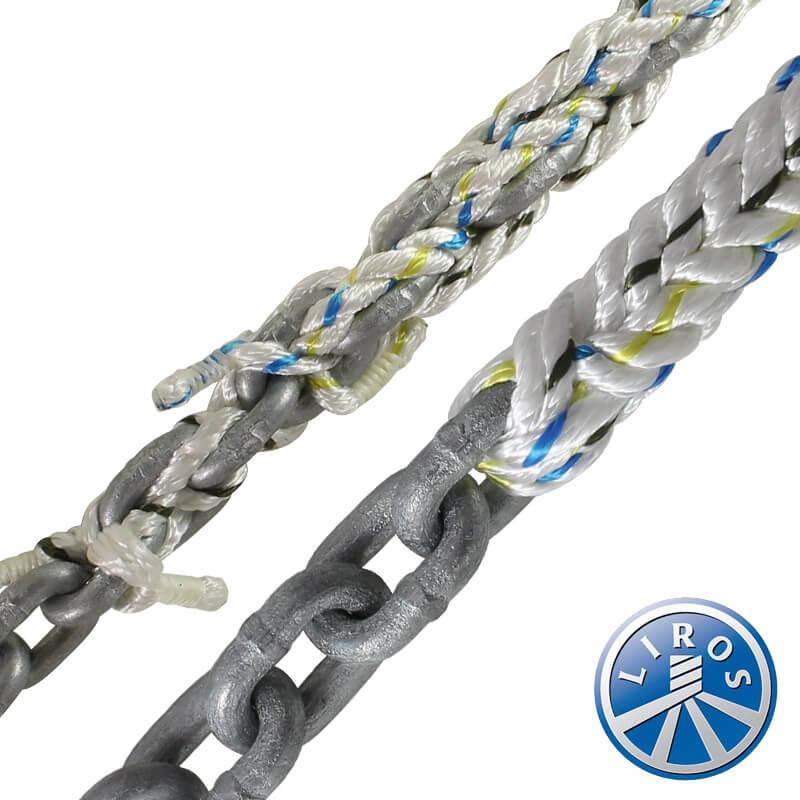
N.B. This table is a guide with columns based on the following:
- Top Quality Grade 40 Anchor Chain
- Top Quality LIROS Rope
- LIROS recommendation
- Jimmy Green experience and customer feedback
Anchor Chain Size Rule of Thumb
There is an old rule of thumb that dates back many years, which states a requirement of 1/8" chain diameter for every 9 or 10 feet of boat length - with approximate metric conversions: e.g. 1/4" now available as 6mm DIN766 chain would be up to 20 or 23 feet Yacht LOA, 7mm DIN766 chain would be up to 23 or 27 feet Yacht LOA, 5/16" now available as 8mm DIN766 would be up to 27 or 31 feet Yacht LOA, 3/8" now available as 10mm DIN766 and 10mm ISO4565 would be up to 34 or 39 feet Yacht LOA.
5/16" US Specification (8.7mm) chain is also available from Jimmy Green Marine, and the rule of thumb would be up to 29 or 34 feet Yacht LOA.
This rule of thumb is pretty close to the Jimmy Green Anchor Chain Size Guide, but it is probably based on Grade 30 chain because Grade 40 is a relatively recent advance for yachting anchor chain. Although modern yachts are generally designed and built with lighter, technologically advanced materials, they are often kitted out with a lot more equipment to add the weight back on, and the current trend is towards heavier anchors with much higher holding power, which will inevitably lead to higher loads on the anchor rode.
Grade 40 Calibrated Anchor Chain is 25%+ stronger than Grade 30 Anchor Chain providing extra assurance when conditions worsen and your yacht is caught on a lee shore.
An Anchor Rode comprises all parts of your anchoring system - anchor chain, anchor rope, and all the connections - the breaking load of all the components should be roughly equal - investing in expensive rope and chain will be undermined by an under-specified anchor to chain connection.
Decision-making factors for sizing your anchor chain and anchor warp:.
- Displacement to Length ratio, i.e. is your yacht relatively light or heavy for her length?
- Monohull or Multihull - catamarans may be subject to more significant anchoring stresses and strains
- Anticipated anchoring conditions, e.g. depth, seabed holding characteristics, the length of fetch and degree of exposure to prevailing winds.
- Your overall assessment of the risks involved (worst-case scenario).
- Weight and design of your bower (main anchor), taking into account the specification of your secondary anchoring system.
An Anchoring System includes every part of the anchor rode from the anchor to the bitter end: anchor, chain, warp, and all the individual means of joining it all together, e.g. connectors; swivels; shackles; splicing.
All the individual parts need to be comparable in strength. The Anchor System is only as strong as the weakest link. The increased holding power of modern anchors means that all the joining elements are subjected to higher loads than ever before.
Grade 40 Calibrated Anchor Chain Splicing Compatibility with Anchorplait Nylon Rope Diameter:
Compatibility rests on two main factors:
- Break Load Comparison
- Physical limitations of the Rope to Chain Splice, i.e. the largest rope that will splice into the chain links, sit comfortably and articulate satisfactorily
6mm Grade 40 Chain c 2300kg MBL Compatible = 10mm Anchorplait Nylon, LIROS MBL 2400kg
7mm Grade 40 Chain c 3100kg MBL ~ Downsize = 10mm Anchorplait Nylon, LIROS MBL 2400kg or Compatible = 12mm Anchorplait Nylon, LIROS MBL 3300kg
8mm Grade 40 Chain c 4000-4400kg MBL ~ Downsize = 12mm Anchorplait Nylon, LIROS MBL 3300kg or Compatible = 14mm Anchorplait Nylon, LIROS MBL 4400kg or Largest Possible for satisfactory splicing = 16mm Anchorplait Nylon, LIROS MBL 5600kg
10mm Grade 40 Chain c 6400-7200kg MBL ~ Slight Downsize = 16mm Anchorplait Nylon LIROS MBL 5600kg or Compatible = 18mm Anchorplait Nylon, LIROS MBL 7000kg
12mm Grade 40 Chain c 9100-9700kg MBL ~ Slight Downsize = 20mm Anchorplait Nylon LIROS MBL 8400kg or Upsize = 24mm Anchorplait Nylon, LIROS MBL 11800kg
Grade 70 chain is generally an all-chain solution because the largest possible rope diameter physically spliceable to the chain won't have the same break load capability.
Yacht owners frequently ask the Jimmy Green Rigging Team to splice 16mm Anchorplait Nylon into 8mm Grade 70 DIN766 Calibrated Anchor Chain. We are happy to do so on request, but the finished splice in 16mm is on the limit of articulation, and the splice will need regular close inspection.
N.B. LIROS 3 Strand Nylon has the same break load characteristics and splicing limits as Anchorplait, so compatibility will be exactly as described above. Anchorplait is more expensive but has valuable additional benefits: Flexibility, balanced Octoplait construction, behaves and flakes like chain, by far the best anchor rope for self-stowing naturally in the chain locker and emerging free of tangles and kinks when re-deployed.
How much Anchor Chain and Rope do I need?
The generally accepted guide for the length of your anchor rode – An Anchor Rode encompasses Chain, Rope and all the shackles and connectors – is 8 metres of rode for every metre of depth you will be anchoring in. This is referred to as the scope, in this case, 8:1.
This works for the middle range of anchorage depths but starts to look a little out of kilter as you approach either end of the scale e.g.
- 8:1 in 3 meters of water equates to 24 metres total rode length, which is possibly not a satisfactory anchoring solution in anything but benign weather
- 8:1 in 5 metres of water equates to 40 metres total rode length, which may be adequate for Inshore and Coastal hopping
- 8:1 in 20 metres of water would be 160 metres of total anchor rode, which would seem a little over the top!
However, Scope 8:1 for 10 metres of depth = 80 metres total chain and warp and this makes a good benchmark starting point for your final decision. For extended Offshore and Ocean cruising, consider increasing the scope to 10:1 on all chain or even 12:1 on a chain/rope combination. This particularly applies to anchorages around some Pacific islands.
Budget and the extra weight in the bow (chain locker) form natural restraints on your final decision regarding the total length of chain and warp.
Your anchor rode is your primary safeguard when anchoring overnight in a foreign anchorage so aim for the longest and best affordable option, bearing in mind the detrimental effect on your yacht’s performance if you overload the bow with too much weight.
Select from
- All Chain: Calibrated Anchor Chain
- Rope / Chain Combination: Anchor Warps Spliced to Chain
- Rope with additional separate chain: Anchor Warps Calibrated Anchor Chain
Do I need an Anchor Chain, Anchor Rope or a combination of Both?
For those blessed with a good windlass, all chain is the popular choice, limited only by your budget, the size of the chain locker and the disadvantage of too much weight in the bow when underway. Fifty metres used to be the norm, but 80-120 metres is much more prevalent today.
Where weight is a limiting factor, a balanced chain/warp combination may be the optimum solution, e.g. 50 metres of chain spliced to 50 metres of rope. The balance can be adjusted proportionally but shouldn’t feature less than 30 metres of chain. The rope component should be as strong as the chain and as stretchy as possible to absorb the shock loads endured in big seas. The rope to chain splice will restrict the maximum anchor rope diameter; see the compatibility guide above.
For anchor retrieval with no power or mechanical advantage, a disproportionate warp/chain combination may be advisable for retrieving the anchor, chain and warp by hand - Consider an extended length of stretchy warp with a relatively short piece of chain to ground the anchor and negate the abrasive effects of the seabed, e.g. anything from 50 up to 100 metres spliced to 5 or 10 metres of chain. Consider increasing the chain length and reducing the rope length if you or your crew can physically manage the extra weight.
The overall length of your rode, whether all chain or a combination, should reflect the depth and type of anchorages you will encounter and the degree of risk associated with your anchoring intentions, i.e. your reliance on ground tackle as a primary yacht safety factor.
An anchor rode comprising all chain with no additional rope will require a snubbing strop or bridle.
This will help prevent the anchor chain from coming up short with a jolt which may have worrying results:
- Jerking the anchor from the set position in the seabed.
- Delivering a damaging shock load to the chain or the deck strongpoint fitting to which the chain is attached if the anchor doesn’t budge.
A combination Chain/Rope Anchor Rode is the optimal arrangement provided the scope of the chain is more than adequate for anticipated anchorage depths and weather conditions.
The extra length of the rope extension will not only increase the scope but also provide valuable shock absorbing capability if conditions seriously worsen.
A second (kedge) anchoring system is typically recommended in addition to the full specification primary (bower) system.
A kedge specification can vary widely according to cruising intentions - from a full specification second storm anchoring system to a traditional kedge, e.g. lunch hook or stern anchor. According to the seabed, different anchors have varying degrees of holding power, so the option of a geometrically different anchor may be advantageous if the primary system is not holding. Traditionally, a second anchor system has less chain, more rope and a lighter stowable anchor - making the whole system physically easier to store on board and deploy when required.
Jimmy Green Marine offer a comprehensive range of solutions from leading brands for all your anchor rode requirements.
The Jimmy Green Rigging Sales Team are always on hand to help you with your selection process.
Shop for Anchor Warps Spliced to Chain
Give feedback on this article

How to Anchor a Sailboat

Last Updated by
Daniel Wade
June 15, 2022
One of the most vital skills for a sailor is oftentimes one of the most confounding ones. Setting the hook in all the different types of anchorages you’re likely to end up in can be confusing to new boaters. Despite how perplexing it can be, this skill is incredibly important, lest you find yourself waking in the middle of the night to the sound of your boat dragging anchor towards rocks.
Good technique and properly-sized equipment for anchoring is vital. Yet, more times than not, even experienced sailors are distracted or in a hurry and skip one of the vital steps for anchoring securely. Even worse, some new sailors never learn the essentials and just throw any anchor-shaped hunk of metal overboard, hoping for the best. That tactic isn’t likely to keep you safe while you slumber so let’s go through what you should do instead.
Table of contents
A Little Forethought
The first thing to do when you’re going to anchor is to pick an anchorage. This may already seem like a lot, but picking a good spot is crucial. You must understand the conditions of that spot before tossing your anchor into the water and calling it good.
Use the chart you purchased or printed out, making a note of all the vital information. Things like wind direction and speed, tidal currents, and even the forecast can be important pieces of the puzzle. Pay extra attention to anything that might reverse the direction your boat is being pulled to prevent having your anchor pulled out.
The best spot is going to have some protection from the wind and waves. You would prefer to have a sand or mud bottom as opposed to a rock or heavy grass bottom. If you have a brand new chart, it’s probably going to have information on the bottom characteristics as well as some of those good spots marked out. You should also make sure that your spot is a few feet deeper than the draft of your boat during low tide.
Once you’ve picked your spot, it’s time to prepare the anchor. Whether lowered by hand or on a roller, make sure the anchor rode is free to run. If it isn’t marked at progressive depths with tags or color codes, stretch it back and forth on deck to keep track of how much rode you’re letting out. For safety’s sake, plan out at least 6 times the water depth.
Actual Anchoring
The actual technique of anchoring can be a bit tricky to learn but can buy you some peace of mind once mastered. Knowing your boat isn’t going to slip off into the night or ram into a neighbor because your anchor dragged can be a massive relief. No one wants to awaken to a bump in the night.
First, you have to actually position the boat where you want to anchor. For motorsailers, you may find this easier to do under power. However you decide to do it, move slowly. There is no need to rush this. It’s better to take a long time on a secure anchor than to rush and drag later. Once you’re over the position, drop anchor. Be careful not to drop a ton of chain on top of your anchor.
Once the anchor is on the seabed, let the boat drift back gradually as you pay out chain. Don’t disturb the anchor yet. For the anchor to work, you want to pull horizontally along the seabed. You are setting the scope as you pay out the chain. The goal is to get the anchor to pull at 15° to 20°. Once sufficient chain has been let out, secure the anchor chain on deck.
Now we have to wait for the anchor to dig in and take its initial set. Once you have the initial set, begin slowly moving astern until the anchor chain straightens out. While you’re moving your boat, pay very careful attention to the chain. If it jumps, that means you’re dragging anchor. If everything seems alright then feel free to hook up the snubber and let out more chain until there’s a loop of it between the snubber hook and the bow roller. Congratulations on anchoring your boat.
Additional Tips
Some additional tips and tricks are in order. This is just good information to have in the back of your mind when anchoring.
Using the Right Type of Anchor
First, your type of anchor heavily influences your ability to set the hook. Most cruising sailboats are going to be equipped with at least two types, each with their own separate rodes. The preferred choice for the bower is generally a spade while a lightweight Danforth generally takes the spot as a kedge. Be familiar with the anchors you’re going to be using and how they’re designed to function.
It may seem strange but the good old-fashioned fisherman’s anchor isn’t going to work the same way as a modern CQR anchor. They are also going to do generally better at different sea beds.
Find the Right Size
Match the anchor you’re using to the size of your boat. All anchors are not created equal. If you’re using a 15lb anchor on a 33ft motorsailer, you are probably not going to have it easy. If you don’t appropriately size your anchor for your vessel, you are increasing the chance of dragging.
If you aren’t sure what size anchor to get, check with the boat’s manufacturer. They often have recommendations. At the end of the day, it’s alright to go on the bigger side of things. Don’t choose your anchor for reasonable conditions. Expect the absolute worst situations because you can’t change your anchor when you’re already out on the seas.
Dragging the Anchor
Understand what it really means to drop anchor. This isn’t a literal phrase. You should lower the anchor slowly. Lowering the anchor gradually prevents the chain from falling on the anchor flukes and fouling the anchor. Dropping it too quickly makes it more likely that a fouled anchor is going to drag if the wind comes up later.
Even when you’ve anchored perfectly and everything has gone according to plan, you should still check periodically. Changing conditions could result in that perfectly-set anchor deciding to drag anyway. Before you take a load off for the night, make sure to have a few ways to tell if your boat is dragging. A modern method is a GPS which can easily reveal a change of positions.
Something a little lower tech would be a small secondary anchor with a noise maker tied to it and dangled over the cockpit. If set up correctly, when the boat moves, the secondary anchor’s rope will pull and cause the noise maker to fall down into the cockpit. If all goes as planned, you wake up to the banging and take any actions needed.
A way to verify dragging is to check the anchor rode at the bow. You may be able to see or feel changes in its tension. If the anchor is bouncing all over the place, it will be easy to spot or feel.
Anchors Aweigh
Keeping your boat from dragging and drifting into rocks, another boat, or a reef is at the top of your priority list. In order to make sure your anchor sets properly and your night of sleep isn’t interrupted by the sound of a boat running aground, it’s best to be safe rather than sorry.
Go through your plan slowly. Make sure you pick the best anchorage for your needs. Check that none of the conditions might change while you’re on the hook, causing your boat to drift in the opposite direction and pull your anchor free. Ensure that you have the right equipment to begin with and make sure to double-check the anchor before you call it a night. It’s better to stay up a little later and make sure your anchor is properly set than to wake up to bad news.
Related Articles
I've personally had thousands of questions about sailing and sailboats over the years. As I learn and experience sailing, and the community, I share the answers that work and make sense to me, here on Life of Sailing.
by this author
How to Sail
Most Recent

What Does "Sailing By The Lee" Mean?
October 3, 2023

The Best Sailing Schools And Programs: Reviews & Ratings
September 26, 2023
Important Legal Info
Lifeofsailing.com is a participant in the Amazon Services LLC Associates Program, an affiliate advertising program designed to provide a means for sites to earn advertising fees by advertising and linking to Amazon. This site also participates in other affiliate programs and is compensated for referring traffic and business to these companies.
Similar Posts

How To Choose The Right Sailing Instructor
August 16, 2023

How To Sail From California To Tahiti
July 4, 2023

How To Tow A Skier Behind A Boat
May 24, 2023
Popular Posts

Best Liveaboard Catamaran Sailboats
December 28, 2023

Can a Novice Sail Around the World?
Elizabeth O'Malley

4 Best Electric Outboard Motors

How Long Did It Take The Vikings To Sail To England?

10 Best Sailboat Brands (And Why)
December 20, 2023

7 Best Places To Liveaboard A Sailboat
Get the best sailing content.
Top Rated Posts
Lifeofsailing.com is a participant in the Amazon Services LLC Associates Program, an affiliate advertising program designed to provide a means for sites to earn advertising fees by advertising and linking to Amazon. This site also participates in other affiliate programs and is compensated for referring traffic and business to these companies. (866) 342-SAIL
© 2024 Life of Sailing Email: [email protected] Address: 11816 Inwood Rd #3024 Dallas, TX 75244 Disclaimer Privacy Policy
- BOAT OF THE YEAR
- Newsletters
- Sailboat Reviews
- Boating Safety
- Sailing Totem
- Charter Resources
- Destinations
- Galley Recipes
- Living Aboard
- Sails and Rigging
- Maintenance
- Best Marine Electronics & Technology

Hands on Sailor: Floating Your Anchor Chain
- By Birgit Hackl
- March 29, 2022
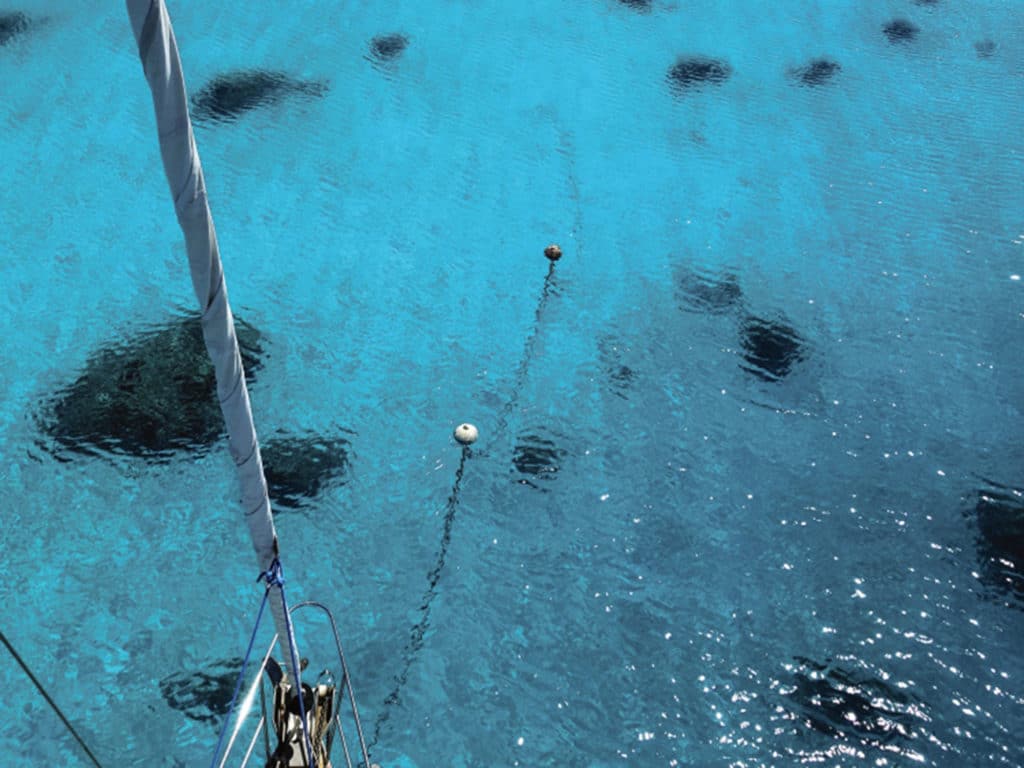
When we reached the South Pacific eight years ago, we were still newbies in coral-reef navigation. We’d had a few close encounters with rocks in murky water while cruising the Caribbean side of Panama and were nervous about dropping the hook near coral. We didn’t dare take our 1988 Sparkman & Stephens 41, Pitufa , with her 7-foot draft, anywhere near shallow water; we sought out deep blue anchorages, which we deemed safer. We’ve learned a lot over the past few years and know now that dark blue isn’t always synonymous with safety. Just because you can’t see coral reefs and other underwater obstacles doesn’t mean they’re not there. Unfortunately, many crews find this out the hard way, when an anchor gets stuck on a reef or chain wraps around a coral head.
If you dive on your anchor and check its placement (and the set of your neighbor’s anchor), you’ll find that coral growth is abundant in 30 and even 60 feet of water in many areas of the South Pacific. Sadly, due to global warming and pollution, many coral reefs are damaged or dead. But some are very much alive and can easily be damaged. In deep anchorages, where letting out a lot scope is necessary, 200 feet of heavy chain can wipe out a large area of coral during an unexpected windshift. Damaging a reef can lead to resentment toward cruisers from the local populations and gives all sailboat crews a bad reputation. This resentment can grow into open hostility and ultimately lead to anchoring bans, such as the recently enacted ones in Tahiti, Moorea, Huahine and Bora Bora.
Safety Risk
Dropping a hook on or near coral is also, of course, a huge safety risk. During an unexpected windshift or rapidly deteriorating weather, if your chain is wrapped around a coral head, it can’t be cleared quickly. The result can be severe damage to both the vessel and the coral, and even the loss of the boat. We witnessed a neighboring boat in an anchorage on the outer reef of the Gambier Islands bend its bow roller when the wind shifted suddenly from east to north. The chain was wrapped, and the boat pitched violently on very short scope in rapidly increasing waves.
The fetch across lagoons should not be underestimated either, especially in large Pacific atolls such as Fakarava or Rangiroa, where the waves can build to 5 feet and higher surprisingly fast, even in light to moderate winds. Recently we were anchored in light easterly winds in Rotoava on the northeast side of Fakarava in calm waters when Pitufa suddenly started rolling. We wondered if a ship was passing by. Five minutes later, a squall reached us, packing 25 knots of wind from the south. In another example, we know of one boat that had its windlass ripped out of the deck during a northwesterly trough in the Tuamotus. And, in May 2020, several sailboats in Fakarava got trapped on a lee shore in front of the village on the eastern side of the lagoon when the wind shifted to the west. They could not get their hooks up quickly, and two boats ended up onshore and were total losses.
Prepare in Advance
Cruisers tend to tell the tales of wrapped chains and trapped anchors at sundowners and get-togethers, making light of the situation and tossing them into the this-happens-to-everyone pile. But fouled anchor gear can lead to major disasters. Fortunately, there are many ways to avoid damaging your boat and the environment if you prepare ahead and follow some general rules.
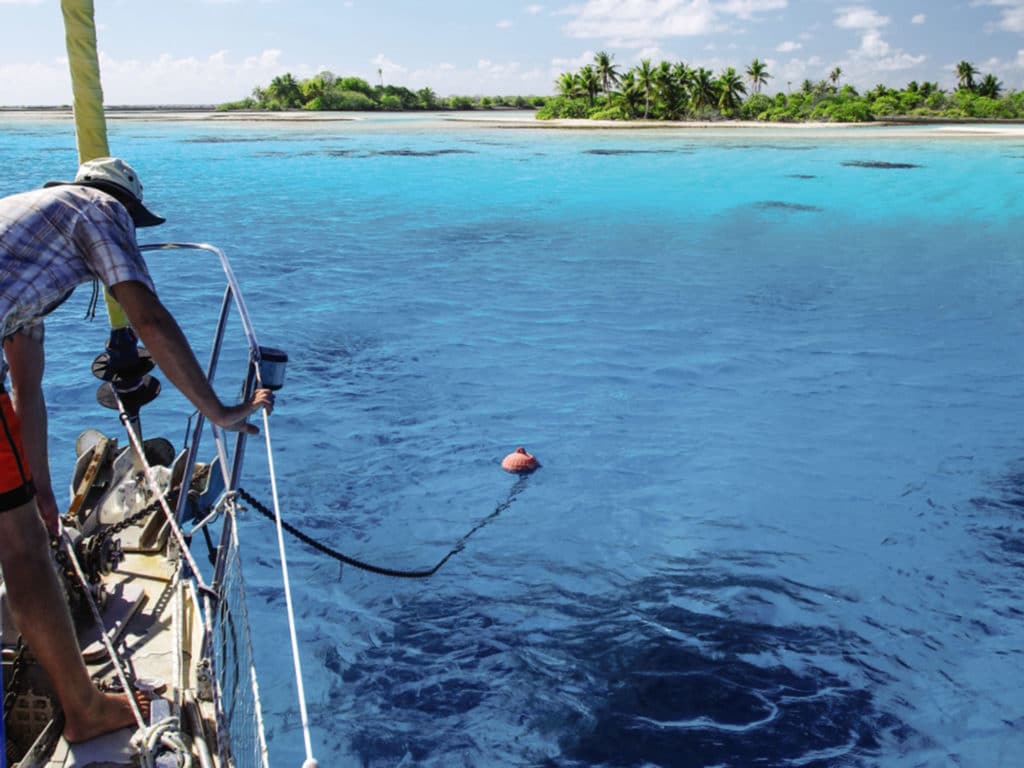
Anchors: Make sure you have a reliable, heavy anchor. Rocna and similar designs dig into sand quickly and are ideal for atoll anchorages. Plow anchors—such as a CQR or Delta—do just what their name suggests before they set. We love and trust our 55-pound German Bügelanker (similar to a Rocna), which we use in combination with 10-millimeter chain in basically all anchoring situations. Our Bügelanker sets in sand within a few inches and allows precision work when picking a spot. In fine sand or mud, the Bügelanker needs a while to settle in, so we don’t immediately set it under tension; once it has sunk in, it stays put. In addition, we carry a light Danforth to be used as a stern anchor or as a sacrificial anchor in an emergency situation when we are not sure whether the anchor will come back up.
Preparation: Prepare before arrival. We like to download and study satellite images before we depart on a crossing. That way we can plan ahead and mark large, sandy spots that look promising in our intended anchorage.
Use the daylight: Try to arrive with good light. Early in the morning and late in the afternoon, the sun turns the surface of the sea into a glittering veil, often making it impossible to make out the bottom.
Have a lookout: Post a lookout on the bow; they can direct the helmsperson and give feedback during reconnaissance circles around the anchorage.
Anchor where you can see the bottom: When possible, drop the hook where you can see the bottom. The shallower it is, the easier it is to judge where a sandy spot is actually located. Refraction fools the eye in deeper water.
Take your time: We often do a dozen spins around an anchorage before we decide on a spot. It took us a lot of willpower to anchor in shallow water the first few times we attempted it. We’d watch the depth sounder rapidly dropping as we edged toward a sandy shelf, while our heart rates accelerated upward at the same pace! We quickly learned to associate the shades of blue—from dark blue to light turquoise—with water depth, even though we still get fooled when the water is so crystal-clear that you believe you can touch the bottom in 15 feet.
If in doubt, I stay at the helm and circle with Pitufa in deep water while my partner, Christian, takes the dinghy and scouts ahead with a portable depth sounder, or just jumps into the water and tries to touch the bottom with his toes. If only the tips of his fingers stick out above the water’s surface when his toes strike sand, we know that Pitufa fits in the spot as well—but only just. We try to anchor in depths between 8 and 15 feet, taking into account both tide and elevated lagoon levels due to swell. Generally speaking, fewer coral heads grow on shallow reef shelves, and we need only about 60 feet of chain to have substantial scope.
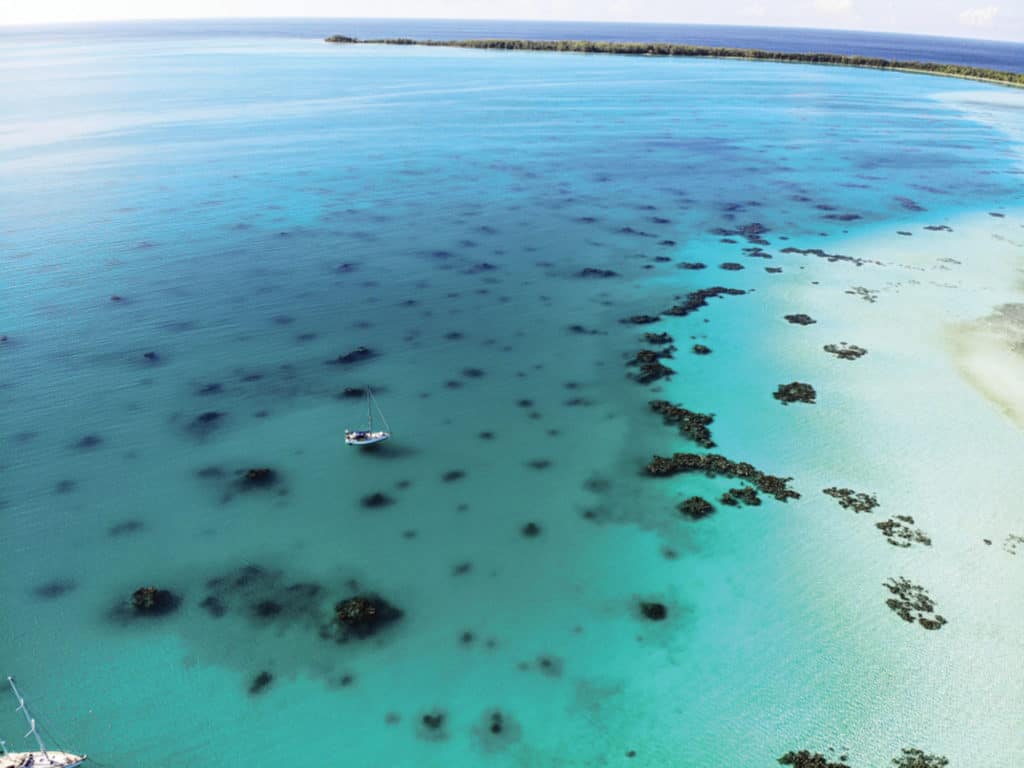
Float the chain: Quite often, we don’t find that picture-perfect, large sandy spot we wished for, but we can make do with a smaller, sandy spot near coral heads if it’s deep enough to allow us to swing over the top of the surrounding coral. In these cases, we make sure that the boat will clear any coral heads, and we drop the hook in the middle of the sandy area and slowly pay out chain. As we do so along the sandy bottom, we assess at which point the chain would contact any coral heads if we were to swing. When we reach that point, we snap in a float and add more chain. We find that it’s best to have multiple fenders or buoys individually tied to a very short line, each with carabiners attached to them that snap into the chain. If the scope is still not enough, we add another float, followed by more chain. During calms, the chain forms loops between the floats without touching bottom, so it’s impossible to get wrapped around obstacles. When the wind picks up, the chain stretches out and the buoys get submerged. Although some might argue that floats nullify the weight advantage of the chain and therefore reduce the overall holding power, we find that with a reliable anchor and enough chain on the bottom before the first float, a floated chain can be compared to chain followed by rope. In shallow water, it’s easy to have ample scope and therefore a flat, almost horizontal chain angle.
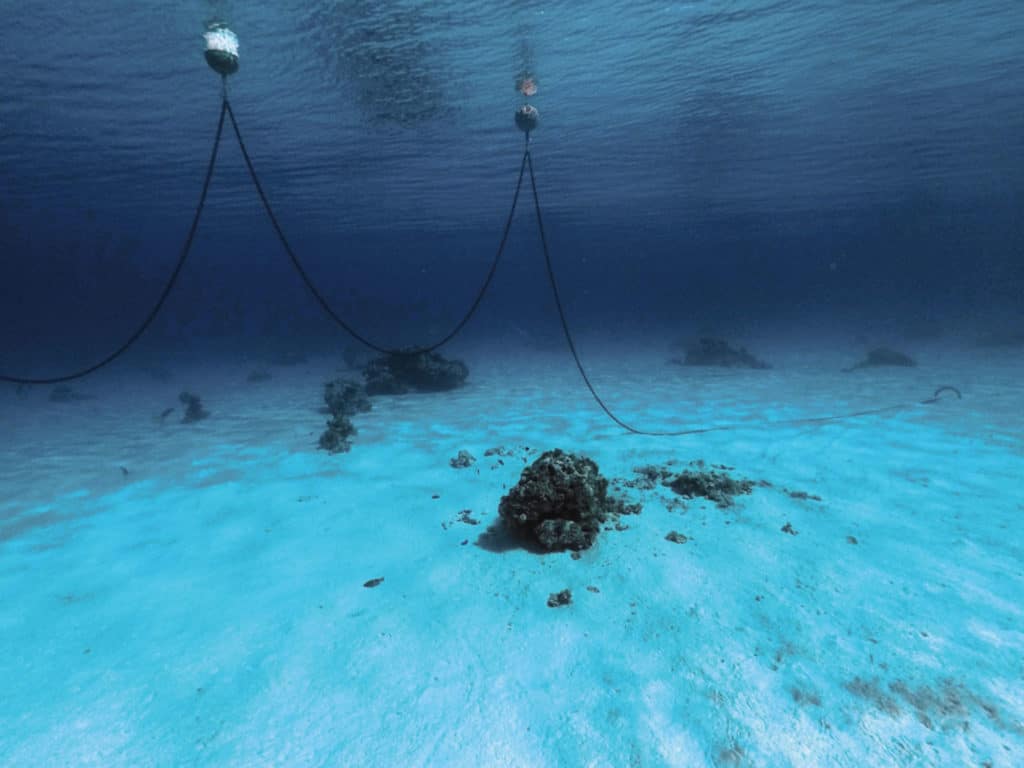
Buoying chains with pearl-farm buoys (where those buoys are readily available) has become a standard procedure throughout Polynesia, but unfortunately, we’ve seen several crews just anchor blindly in deep water and then busily add half a dozen floats. We call them feel-good floats, or alibi floats; the first ones can’t hold up the heavy chain and end up pinned to the bottom, while the last ones just bob decoratively on the surface off the bow. If there’s really no other choice but to anchor in the dark-blue deepwater areas where you can’t see coral heads, adding floats still reduces the risk of getting tangled up, but it is better if you tie two buoys together, or use one that’s a size bigger than the pearl-farm buoys so that it can actually support the weight of a longer chain section. It doesn’t make sense to keep threading floats onto the chain until it looks like a pearl necklace—such pretty designs only pose a hazard to local traffic.
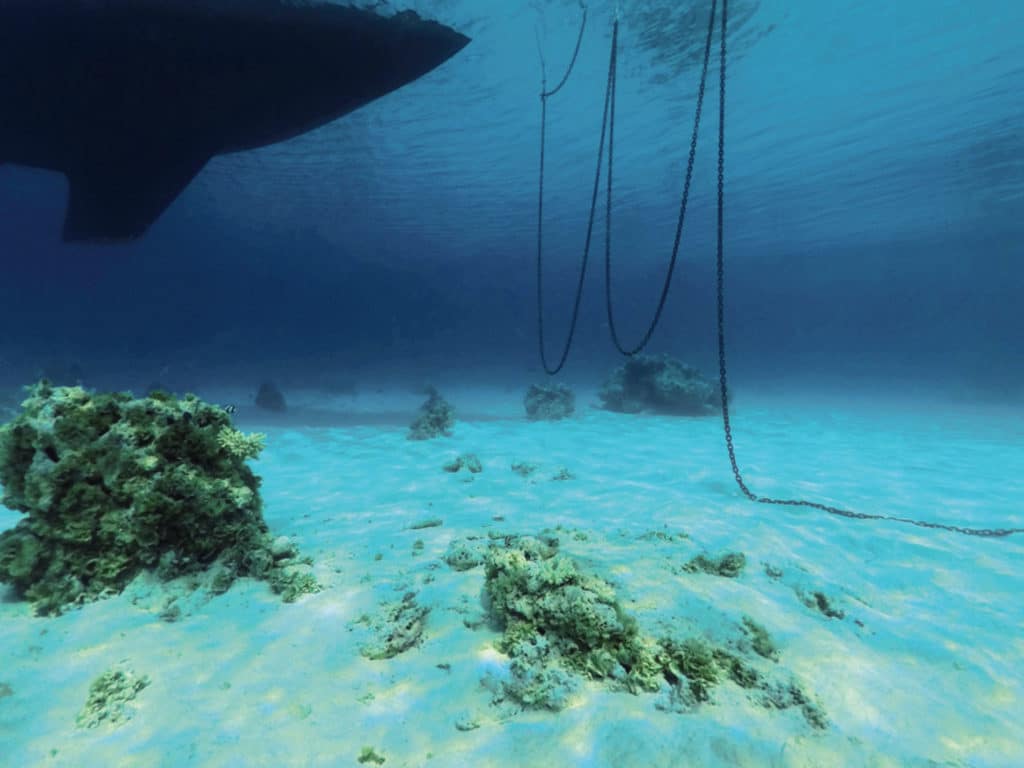
Dropping the hook blindly is never a good idea. We dial up the patience, take our time, look around a little bit longer, and do our best to find a shallow, sandy spot—even if that means we’re a longer dinghy ride to our intended snorkel spot or to the pizza place ashore. Finding the ideal anchorage might take a bit longer, and using buoys on the chain takes practice and experience, but when you’re finally floating in a picture-perfect, light-turquoise swimming pool, you’ll find that it’s worth the effort.
Birgit Hackl and Christian Feldbauer have anchored their way across the Mediterranean, Caribbean and South Pacific since 2011. They’ve spent the past eight seasons in French Polynesia. Read more about anchoring, weather and other topics on their blog .
- More: Anchor Chain , Anchoring , How To , print 2022 march , safety at sea , seamanship
- More How To

3 Clutch Sails For Peak Performance

It’s Time to Rethink Your Ditch Kit

8 Ways to Prevent Seasickness

How To De-Winterize Your Diesel Engine
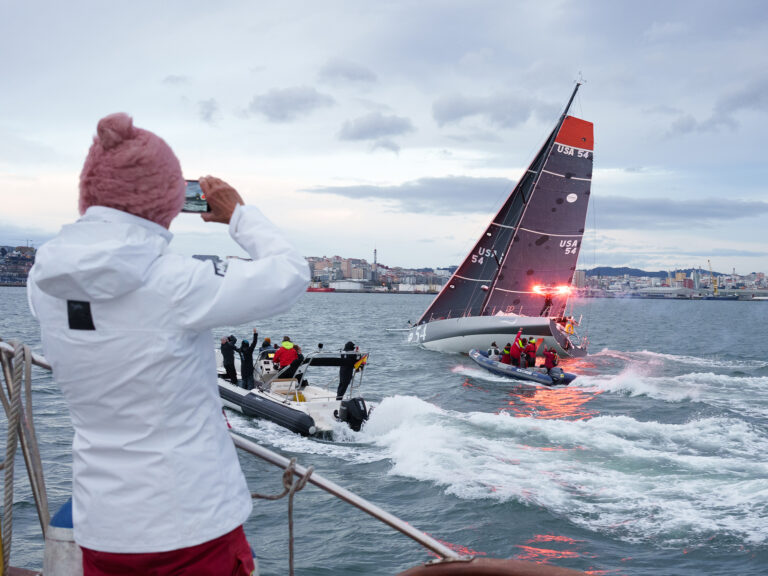
Cole Brauer Completes the Global Solo Challenge
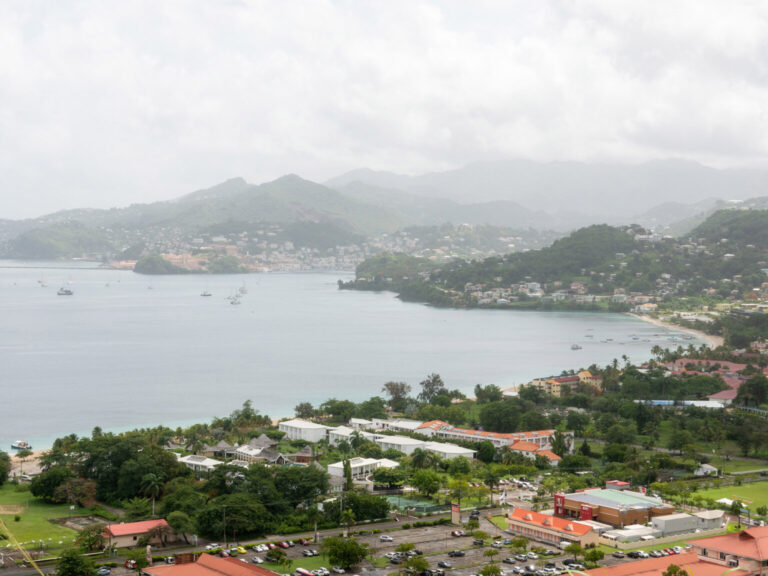
Grenadines Boat Hijacking Suspects Charged with Murder
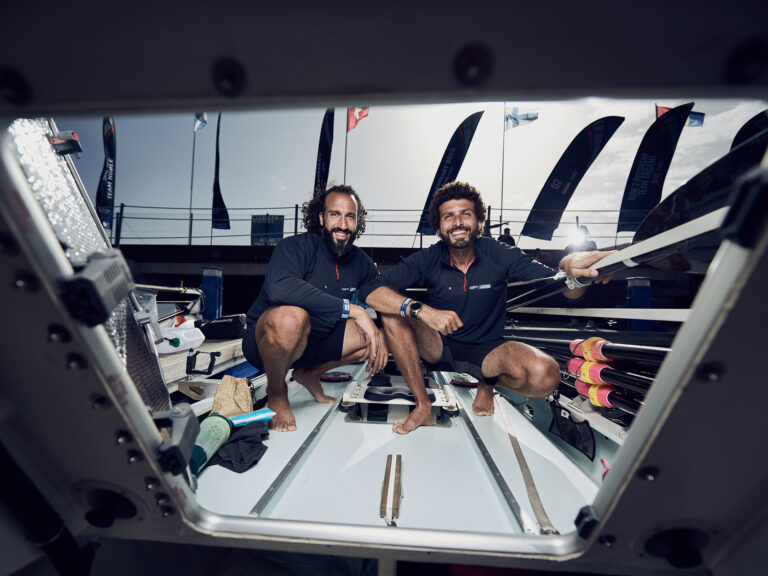
13 Hours in a Life Raft
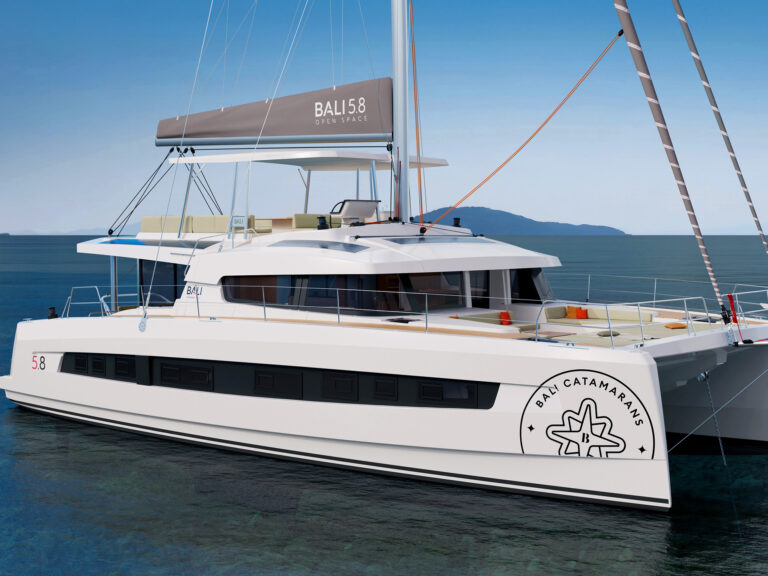
Meet the Bali 5.8
- Digital Edition
- Customer Service
- Privacy Policy
- Terms of Use
- Email Newsletters
- Cruising World
- Florida Travel + Life
- Sailing World
- Salt Water Sportsman
- Sport Fishing
- Wakeboarding

Please verify you are a human
Access to this page has been denied because we believe you are using automation tools to browse the website.
This may happen as a result of the following:
- Javascript is disabled or blocked by an extension (ad blockers for example)
- Your browser does not support cookies
Please make sure that Javascript and cookies are enabled on your browser and that you are not blocking them from loading.
Reference ID: cd42a507-e5fe-11ee-a0c4-36e49a9d1e80
Powered by PerimeterX , Inc.
- Store Locator
- Anchor, Dock & Trailer
Anchor Chain
- Bow Anchor Rollers
Mooring Buoys
Anchoring and mooring hardware.
- Anchor / Dock Rope and Line
- Anchor Lines
38 Products
Product type.
- Anodes / Zincs
- Chain / Rode
- Rope / Line
Manufacturer
- Acco Chain (FKI Group)
- Campbell Fittings, Inc.
- Canada Metal (Martyr Anodes)
- Euro Products, Inc.
- Greenfield Industries
- Imtra Marine Products
- Lewmar Marine Ltd.
- Peerless Chain Company
- WHITECAP INDUSTRIES, INC
- Salt or Brackish Waters
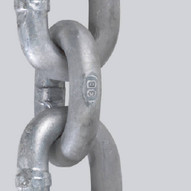
Information About Purchasing Anchor Chain
Anchor chain & anchors, why to use anchor line in combination with anchor chain, windlasses and parts.
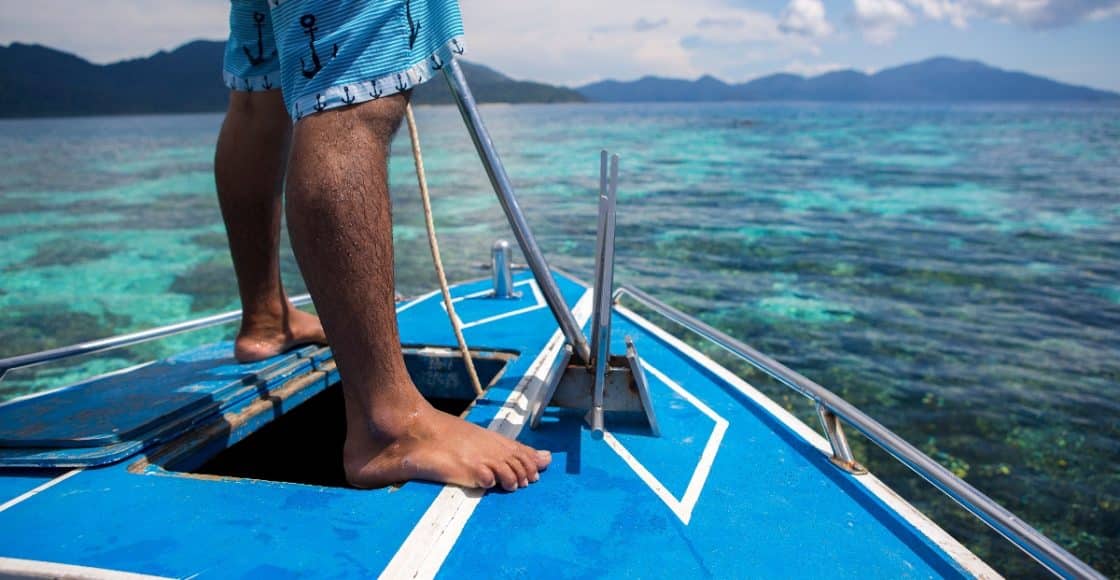
Anchoring: How Much Chain Do I Need?

Table of Contents
Anchoring a boat is pretty easy once you know the steps and practice. Even then, people get overwhelmed with doubt particularly with this question: How much chain do I need? Here are some tips to boost your confidence when you’re sticking yourself to the ground.
Post summary:
Calculating your anchor scope
Rode type matters.
- Allowing for swinging room when anchoring
Counting out rode
- Quick anchoring tips
Get boating experience with Boatsetter
The scope is the ratio of the length of the anchor rode you will want to pay out to the depth of the water. Anchor rode is what connects the anchor to the boat. What connects the anchor to the boat may be rope, chain, or a combination of the two. The more rode the smaller the angle of the shank to the bottom surface which helps the anchor remain dug in and secure.
The length of rode/water depth ratio or “scope” you’ll need depends on the size and type of boat, size and type of anchor and rode, the holding ground, the conditions including weather and sea state, and the length of your stay in the anchorage. The general rule is a ratio of 7:1, or 7 times the rode to the depth of the water. So, if you anchor in 20 feet, you’ll need 140 feet of rode. Now for the exceptions.
If you’re dropping anchor for lunchtime, the weather is calm, you’re on a small runabout and you’ll be aboard the whole time, a scope of 4:1 may suffice. In 20 feet of water, you’ll need 80 feet of rode. However, let’s say you’re anchoring a large boat overnight, want to leave the boat, or the weather is rough with heavy wind, sea state and current. Then you should opt for greater scope (say 7:1) and let out more rode to keep the weight low and the anchor snug.
An anchor rode made up entirely of chain is heavier than all line or a chain-line rode, so less may be needed. If you have a large anchor for the size of the boat and 0.5 to 0.75 chain, the combined weight will help you stay put. If you have a small amount of chain spliced to rope rode, opt for scope with a larger ratio. If in doubt and when you have the swinging room, more scope or chain is better. READ MORE: Boat Anchor Types: A Complete Guide
Allowing for swinging room when anchoring
The optimal amount of chain will depend heavily on your swinging room. Swinging room is the movement of the boat around the anchor as the wind and current shift. If you’re in a tight anchorage with nearby boats, docks or rocks, you may not have enough space for a proper amount of scope in which case, you should consider a safer area. Pro tip: Pick a spot with swinging room in all directions.
Sailboats , powerboats and sail-power catamarans have different structures above and below the waterline and will move differently from one another. A powerboat is more likely to move with the wind since it has a higher freeboard while a sailboat will react more to current given its deep keel . Catamarans with two hulls are their own animal entirely. When anchoring, keep in mind how other boats around you are likely to swing in changing conditions. This will affect both where you anchor and how much scope you use.
To limit the swinging room, use two anchors. You can anchor bow and stern by dropping the bow anchor and motoring back, then dropping the stern anchor and motoring forward until both are set and the boat is snug in the middle, effectively cutting the scope potentially in half. Or you can use two anchors off the bow about 90 degrees apart in a Bahamian Moor which is very effective in narrow channels or rivers.
Many times, the chain isn’t marked so it’s hard to gage how much is going out. Watch your windlass for the first few feet and estimate how fast the chain is leaving the boat. Most windlasses will put out a foot of chain per second. Just count how long the windlass turns and you’ll be in the ballpark of how much chain has gone out. When anchoring a small boat by hand with line, take the line around a cleat to minimize chafe on the hands as it slips down and estimate how much you’re putting out manually.
Anchors aweigh: Quick tips
- Go slow and give the boat and anchor time to settle.
- If the anchor is dragging (or not holding), you’ll need to retrieve the entire anchor and try again ( Pro tip: You’ll see the anchor chain go taught and then loose or you’ll see it jerk as the boat moves aft with the engine or wind).
- Don’t crowd anyone who is already anchored, be careful to not drift down on boats behind you, and if everyone is on two anchors (fore and aft) then you need to be prepared to do the same.
- Don’t anchor near set moorings because those boats won’t swing as much as you will on a long scope.
- Be prepared to move if you’re making anyone unsafe or uncomfortable.
Anchoring isn’t as difficult as our mind’s make it out to be. Just follow the steps , apply the anchoring tips, and enjoy your boat day.
Watch this video on anchoring a boat
About us
Boatsetter is the go-to app for boat rentals and on-water experiences. Whatever the adventure, we’ve got a boat for that—Set sail , start the party , go yachting , make your trophy catch , and hone your watersports skills! Download the Boatsetter app ( App Store | Google Play ). Make sure to follow @boatsetter on Instagram, and tag us in all your boat day pictures for the chance to be featured.
Rent. List. Share—Only at Boatsetter

Boatsetter empowers people to explore with confidence by showing them a world of possibility on the water. Rent a boat, list your boat, or become a Boatsetter captain today.
Browse by experience

Explore articles
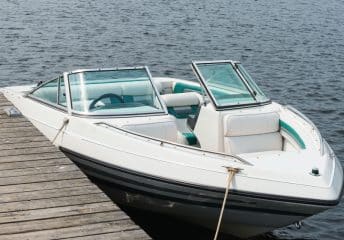
Docking a Boat: 5 Easy Steps for Beginners
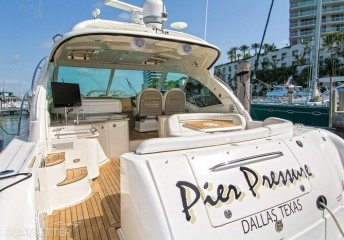
What does your boat's name say about you?
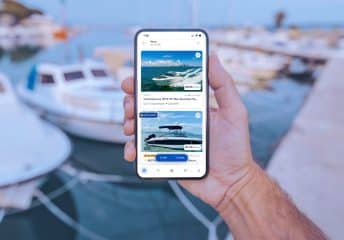
How to Rent a Boat
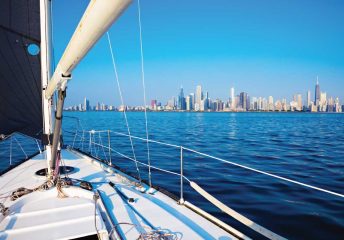
Chicago Regatta 2022: Boating for Children’s Charity
Comparative investigations of aftersintering of UO 2 fuel pellets
- Theory and Processes of Formation and Sintering of Powdered Materials
- Published: 06 May 2010
- Volume 51 , pages 173–176, ( 2010 )
Cite this article
- V. V. Basov 1
23 Accesses
Explore all metrics
The basic parameters of comparative tests of UO 2 fuel pellets produced by the technology of powder metallurgy for aftersinterability using their repeated thermal treatment (aftersintering) in different gas media, namely, with and without humidification, are presented. The results of an evaluation of the level of aftersinterability of these pellets by different procedures is presented, they are analyzed, and a substantiation of the expediency of using this operation manual for evaluating afersintering without the humidification of the gas medium developed at the OAO Machine Building Works (MSZ), Elektrostal’, Moscow oblast, is presented.
This is a preview of subscription content, log in via an institution to check access.
Access this article
Price excludes VAT (USA) Tax calculation will be finalised during checkout.
Instant access to the full article PDF.
Rent this article via DeepDyve
Institutional subscriptions
Similar content being viewed by others

Investigation of (U, Th)O2 Fuel
I. S. Kurina, V. N. Rumyantsev & S. G. Samoilov*
Preparation of powdered uranium oxides by microwave heating of substandard ceramic pellets of oxide nuclear fuel
Yu. M. Kulyako, T. I. Trofimov, … B. F. Myasoedov
Fuel pellets based on uranium dioxide and alloyed with nanodispersed additives of Al(OH)3 and TiO2
V. S. Panov, V. Yu. Lopatin, … V. V. Martynov
An Acceptable Model and Related Statistical Methods for the Analysis of Fuel Densification , US Nuclear Regulatory Commission, Regulatory Guide 1.126.1978.
Freshley, M.D., Brite, D.M., Daniel, I.L., and Hart, P.E., J. Nucl. Mater , 1976, vol. 62, pp. 138–166.
Article CAS ADS Google Scholar
Radford, K. and Pope, I., J. Nucl. Mater , 1977, vol. 64, pp. 289–299.
Radford, K., et al., US Patent 4430276, 1984.
Basov, V.V., Metodika provedeniya ispytanii tabletok is dioksida urana na “dospekaemost’ “ (Procedure for Performance of the Tests of the Pellets made of Uranium Dioxide for Aftersinterability), Electrostal’: PO MSZ, 1994.
Google Scholar
Bakhteev, A.N., Opredelenie termicheskoi stabil’nosti geometricheskikh razmerov toplivnykh tabletok tipa “V” i “R”: Metodika vypolneniya izmerenii (Determination of Thermal Stability of Geometric Sizes for Fuel Pellets of Types “V” and “R”: Procedure of Carrying out the Measurements), Moscow: VNIINM, 1992.
Basov, V.V., Opredelenie kharacteristik termicheskoi stabil’nosti toplivnykh tabletok tipov “R”, “R-E”, “V”: Metodika (tekhnologicheskaya instruktsiya) (Determination of Characteristics of Thermal Stability of Fuel Pellets of Types “R”, “R-E”, and “V”: Procedure (Technological Instruction), Electrostal’: OAO MSZ, 1999.
Kotel’nikov, R.B., Bashlykov, S.N., Kashtanov, A.I., et al., Vysokotemperaturnoe yadernoe toplivo (HighTemperature Nuclear Fuel), Moscow: Metallurgiya, 1978.
Download references
Author information
Authors and affiliations.
OAO Machine Building Works, ul. K. Marksa 12, Elektrostal’, Moscow oblast, 144001, Russia
V. V. Basov
You can also search for this author in PubMed Google Scholar
Additional information
Original Russian Text © V.V. Basov, 2009, published in Izvestiya VUZ. Poroshkovaya Metallurgiya i Funktsional’nye Pokrytiya, 2009, No. 3, pp. 27–30.
About this article
Basov, V.V. Comparative investigations of aftersintering of UO 2 fuel pellets. Russ. J. Non-ferrous Metals 51 , 173–176 (2010). https://doi.org/10.3103/S1067821210020185
Download citation
Published : 06 May 2010
Issue Date : April 2010
DOI : https://doi.org/10.3103/S1067821210020185
Share this article
Anyone you share the following link with will be able to read this content:
Sorry, a shareable link is not currently available for this article.
Provided by the Springer Nature SharedIt content-sharing initiative
- fuel pellets
- model of fuel compaction
- repeated thermal treatment
- aftersintering
- aftersinterability
- procedure of carrying out aftersintering
- aftersintering installation
- stoichiometric composition
- isothermal sintering
- thermal shrinkage
- Find a journal
- Publish with us
- Track your research

Turn Your Curiosity Into Discovery
Latest facts.

How To Protect Children From Junk Food Marketing

12 Intriguing Facts About Balatro
40 facts about elektrostal.
Written by Lanette Mayes
Modified & Updated: 02 Mar 2024
Reviewed by Jessica Corbett

Elektrostal is a vibrant city located in the Moscow Oblast region of Russia. With a rich history, stunning architecture, and a thriving community, Elektrostal is a city that has much to offer. Whether you are a history buff, nature enthusiast, or simply curious about different cultures, Elektrostal is sure to captivate you.
This article will provide you with 40 fascinating facts about Elektrostal, giving you a better understanding of why this city is worth exploring. From its origins as an industrial hub to its modern-day charm, we will delve into the various aspects that make Elektrostal a unique and must-visit destination.
So, join us as we uncover the hidden treasures of Elektrostal and discover what makes this city a true gem in the heart of Russia.
Key Takeaways:
- Elektrostal, known as the “Motor City of Russia,” is a vibrant and growing city with a rich industrial history, offering diverse cultural experiences and a strong commitment to environmental sustainability.
- With its convenient location near Moscow, Elektrostal provides a picturesque landscape, vibrant nightlife, and a range of recreational activities, making it an ideal destination for residents and visitors alike.
Known as the “Motor City of Russia.”
Elektrostal, a city located in the Moscow Oblast region of Russia, earned the nickname “Motor City” due to its significant involvement in the automotive industry.
Home to the Elektrostal Metallurgical Plant.
Elektrostal is renowned for its metallurgical plant, which has been producing high-quality steel and alloys since its establishment in 1916.
Boasts a rich industrial heritage.
Elektrostal has a long history of industrial development, contributing to the growth and progress of the region.
Founded in 1916.
The city of Elektrostal was founded in 1916 as a result of the construction of the Elektrostal Metallurgical Plant.
Located approximately 50 kilometers east of Moscow.
Elektrostal is situated in close proximity to the Russian capital, making it easily accessible for both residents and visitors.
Known for its vibrant cultural scene.
Elektrostal is home to several cultural institutions, including museums, theaters, and art galleries that showcase the city’s rich artistic heritage.
A popular destination for nature lovers.
Surrounded by picturesque landscapes and forests, Elektrostal offers ample opportunities for outdoor activities such as hiking, camping, and birdwatching.
Hosts the annual Elektrostal City Day celebrations.
Every year, Elektrostal organizes festive events and activities to celebrate its founding, bringing together residents and visitors in a spirit of unity and joy.
Has a population of approximately 160,000 people.
Elektrostal is home to a diverse and vibrant community of around 160,000 residents, contributing to its dynamic atmosphere.
Boasts excellent education facilities.
The city is known for its well-established educational institutions, providing quality education to students of all ages.
A center for scientific research and innovation.
Elektrostal serves as an important hub for scientific research, particularly in the fields of metallurgy, materials science, and engineering.
Surrounded by picturesque lakes.
The city is blessed with numerous beautiful lakes, offering scenic views and recreational opportunities for locals and visitors alike.
Well-connected transportation system.
Elektrostal benefits from an efficient transportation network, including highways, railways, and public transportation options, ensuring convenient travel within and beyond the city.
Famous for its traditional Russian cuisine.
Food enthusiasts can indulge in authentic Russian dishes at numerous restaurants and cafes scattered throughout Elektrostal.
Home to notable architectural landmarks.
Elektrostal boasts impressive architecture, including the Church of the Transfiguration of the Lord and the Elektrostal Palace of Culture.
Offers a wide range of recreational facilities.
Residents and visitors can enjoy various recreational activities, such as sports complexes, swimming pools, and fitness centers, enhancing the overall quality of life.
Provides a high standard of healthcare.
Elektrostal is equipped with modern medical facilities, ensuring residents have access to quality healthcare services.
Home to the Elektrostal History Museum.
The Elektrostal History Museum showcases the city’s fascinating past through exhibitions and displays.
A hub for sports enthusiasts.
Elektrostal is passionate about sports, with numerous stadiums, arenas, and sports clubs offering opportunities for athletes and spectators.
Celebrates diverse cultural festivals.
Throughout the year, Elektrostal hosts a variety of cultural festivals, celebrating different ethnicities, traditions, and art forms.
Electric power played a significant role in its early development.
Elektrostal owes its name and initial growth to the establishment of electric power stations and the utilization of electricity in the industrial sector.
Boasts a thriving economy.
The city’s strong industrial base, coupled with its strategic location near Moscow, has contributed to Elektrostal’s prosperous economic status.
Houses the Elektrostal Drama Theater.
The Elektrostal Drama Theater is a cultural centerpiece, attracting theater enthusiasts from far and wide.
Popular destination for winter sports.
Elektrostal’s proximity to ski resorts and winter sport facilities makes it a favorite destination for skiing, snowboarding, and other winter activities.
Promotes environmental sustainability.
Elektrostal prioritizes environmental protection and sustainability, implementing initiatives to reduce pollution and preserve natural resources.
Home to renowned educational institutions.
Elektrostal is known for its prestigious schools and universities, offering a wide range of academic programs to students.
Committed to cultural preservation.
The city values its cultural heritage and takes active steps to preserve and promote traditional customs, crafts, and arts.
Hosts an annual International Film Festival.
The Elektrostal International Film Festival attracts filmmakers and cinema enthusiasts from around the world, showcasing a diverse range of films.
Encourages entrepreneurship and innovation.
Elektrostal supports aspiring entrepreneurs and fosters a culture of innovation, providing opportunities for startups and business development.
Offers a range of housing options.
Elektrostal provides diverse housing options, including apartments, houses, and residential complexes, catering to different lifestyles and budgets.
Home to notable sports teams.
Elektrostal is proud of its sports legacy, with several successful sports teams competing at regional and national levels.
Boasts a vibrant nightlife scene.
Residents and visitors can enjoy a lively nightlife in Elektrostal, with numerous bars, clubs, and entertainment venues.
Promotes cultural exchange and international relations.
Elektrostal actively engages in international partnerships, cultural exchanges, and diplomatic collaborations to foster global connections.
Surrounded by beautiful nature reserves.
Nearby nature reserves, such as the Barybino Forest and Luchinskoye Lake, offer opportunities for nature enthusiasts to explore and appreciate the region’s biodiversity.
Commemorates historical events.
The city pays tribute to significant historical events through memorials, monuments, and exhibitions, ensuring the preservation of collective memory.
Promotes sports and youth development.
Elektrostal invests in sports infrastructure and programs to encourage youth participation, health, and physical fitness.
Hosts annual cultural and artistic festivals.
Throughout the year, Elektrostal celebrates its cultural diversity through festivals dedicated to music, dance, art, and theater.
Provides a picturesque landscape for photography enthusiasts.
The city’s scenic beauty, architectural landmarks, and natural surroundings make it a paradise for photographers.
Connects to Moscow via a direct train line.
The convenient train connection between Elektrostal and Moscow makes commuting between the two cities effortless.
A city with a bright future.
Elektrostal continues to grow and develop, aiming to become a model city in terms of infrastructure, sustainability, and quality of life for its residents.
In conclusion, Elektrostal is a fascinating city with a rich history and a vibrant present. From its origins as a center of steel production to its modern-day status as a hub for education and industry, Elektrostal has plenty to offer both residents and visitors. With its beautiful parks, cultural attractions, and proximity to Moscow, there is no shortage of things to see and do in this dynamic city. Whether you’re interested in exploring its historical landmarks, enjoying outdoor activities, or immersing yourself in the local culture, Elektrostal has something for everyone. So, next time you find yourself in the Moscow region, don’t miss the opportunity to discover the hidden gems of Elektrostal.
Q: What is the population of Elektrostal?
A: As of the latest data, the population of Elektrostal is approximately XXXX.
Q: How far is Elektrostal from Moscow?
A: Elektrostal is located approximately XX kilometers away from Moscow.
Q: Are there any famous landmarks in Elektrostal?
A: Yes, Elektrostal is home to several notable landmarks, including XXXX and XXXX.
Q: What industries are prominent in Elektrostal?
A: Elektrostal is known for its steel production industry and is also a center for engineering and manufacturing.
Q: Are there any universities or educational institutions in Elektrostal?
A: Yes, Elektrostal is home to XXXX University and several other educational institutions.
Q: What are some popular outdoor activities in Elektrostal?
A: Elektrostal offers several outdoor activities, such as hiking, cycling, and picnicking in its beautiful parks.
Q: Is Elektrostal well-connected in terms of transportation?
A: Yes, Elektrostal has good transportation links, including trains and buses, making it easily accessible from nearby cities.
Q: Are there any annual events or festivals in Elektrostal?
A: Yes, Elektrostal hosts various events and festivals throughout the year, including XXXX and XXXX.
Was this page helpful?
Our commitment to delivering trustworthy and engaging content is at the heart of what we do. Each fact on our site is contributed by real users like you, bringing a wealth of diverse insights and information. To ensure the highest standards of accuracy and reliability, our dedicated editors meticulously review each submission. This process guarantees that the facts we share are not only fascinating but also credible. Trust in our commitment to quality and authenticity as you explore and learn with us.
Share this Fact:

Rosatom Starts Production of Rare-Earth Magnets for Wind Power Generation
TVEL Fuel Company of Rosatom has started gradual localization of rare-earth magnets manufacturing for wind power plants generators. The first sets of magnets have been manufactured and shipped to the customer.
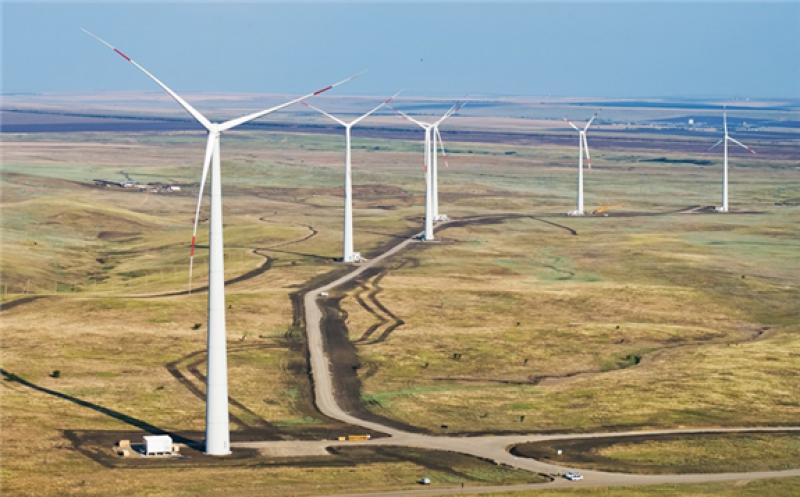
In total, the contract between Elemash Magnit LLC (an enterprise of TVEL Fuel Company of Rosatom in Elektrostal, Moscow region) and Red Wind B.V. (a joint venture of NovaWind JSC and the Dutch company Lagerwey) foresees manufacturing and supply over 200 sets of magnets. One set is designed to produce one power generator.
“The project includes gradual localization of magnets manufacturing in Russia, decreasing dependence on imports. We consider production of magnets as a promising sector for TVEL’s metallurgical business development. In this regard, our company does have the relevant research and technological expertise for creation of Russia’s first large-scale full cycle production of permanent rare-earth magnets,” commented Natalia Nikipelova, President of TVEL JSC.
“NovaWind, as the nuclear industry integrator for wind power projects, not only made-up an efficient supply chain, but also contributed to the development of inter-divisional cooperation and new expertise of Rosatom enterprises. TVEL has mastered a unique technology for the production of magnets for wind turbine generators. These technologies will be undoubtedly in demand in other areas as well,” noted Alexander Korchagin, Director General of NovaWind JSC.
For reference:
TVEL Fuel Company of Rosatom incorporates enterprises for the fabrication of nuclear fuel, conversion and enrichment of uranium, production of gas centrifuges, as well as research and design organizations. It is the only supplier of nuclear fuel for Russian nuclear power plants. TVEL Fuel Company of Rosatom provides nuclear fuel for 73 power reactors in 13 countries worldwide, research reactors in eight countries, as well as transport reactors of the Russian nuclear fleet. Every sixth power reactor in the world operates on fuel manufactured by TVEL. www.tvel.ru
NovaWind JSC is a division of Rosatom; its primary objective is to consolidate the State Corporation's efforts in advanced segments and technological platforms of the electric power sector. The company was founded in 2017. NovaWind consolidates all of the Rosatom’s wind energy assets – from design and construction to power engineering and operation of wind farms.
Overall, by 2023, enterprises operating under the management of NovaWind JSC, will install 1 GW of wind farms. http://novawind.ru
Elemash Magnit LLC is a subsidiary of Kovrov Mechanical Plant (an enterprise of the TVEL Fuel Company of Rosatom) and its main supplier of magnets for production of gas centrifuges. The company also produces magnets for other industries, in particular, for the automotive
industry. The production facilities of Elemash Magnit LLC are located in the city of Elektrostal, Moscow Region, at the site of Elemash Machine-Building Plant (a nuclear fuel fabrication facility of TVEL Fuel Company).
Rosatom is a global actor on the world’s nuclear technology market. Its leading edge stems from a number of competitive strengths, one of which is assets and competences at hand in all nuclear segments. Rosatom incorporates companies from all stages of the technological chain, such as uranium mining and enrichment, nuclear fuel fabrication, equipment manufacture and engineering, operation of nuclear power plants, and management of spent nuclear fuel and nuclear waste. Nowadays, Rosatom brings together about 350 enterprises and organizations with the workforce above 250 K. https://rosatom.ru/en/
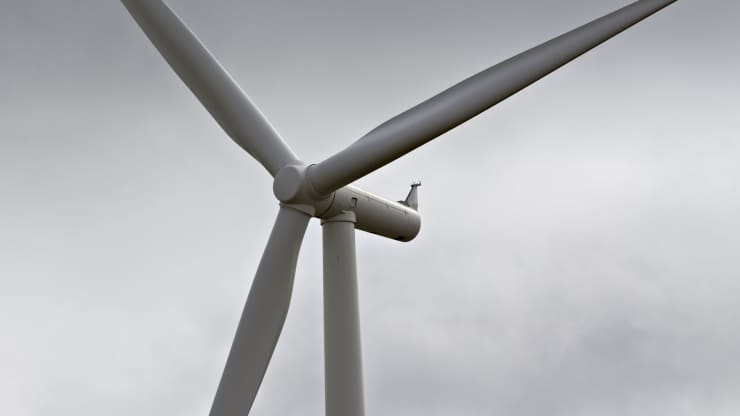
U.S. Added Less New Wind Power in 2021 Than the Previous Year — Here’s Why
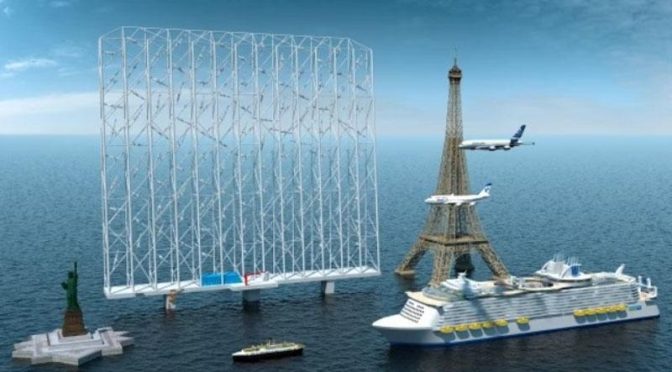
Norway’s Massive Floating Wind Turbine Wall Will Be Funded by the Government This Year
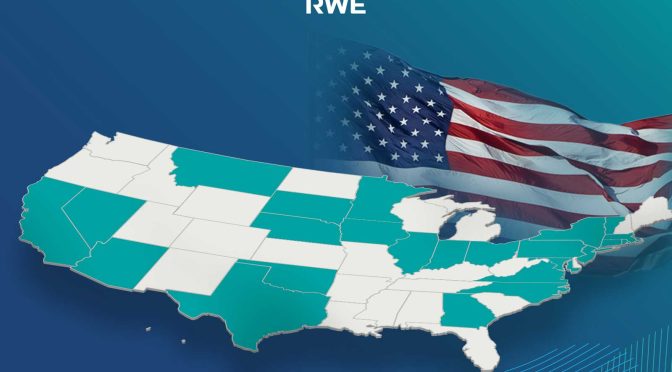
RWE Becomes a Top Tier Renewable Energy Company in the United States

Renew Power Deploys India’s 1st 3X Platform Wind Turbine Generators
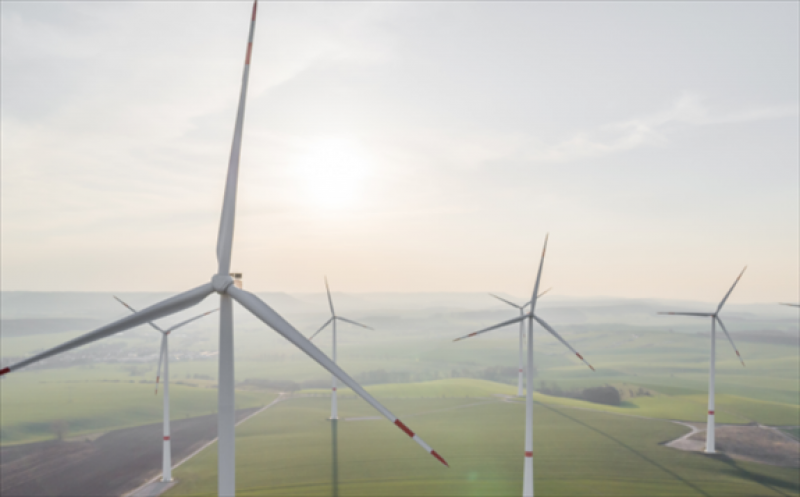
Top 10 Countries in Wind Energy Capacity
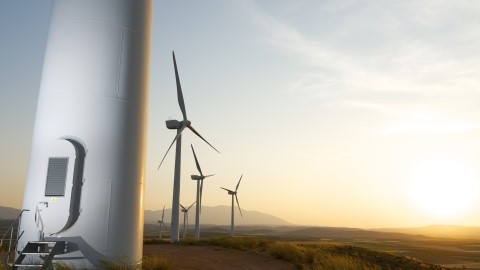
Onshore Wind to Play a Key Role in Achieving India’s 2030 Target

IMAGES
VIDEO
COMMENTS
The most popular varieties of galvanized-steel windlass chain include high-test or grade 40 (usually marked HT, G4, or HT4); triple B or grade 30 (marked as BBB or 3B); and proof coil, also grade 30 (often marked PC, PC3, or G3). Each has attributes and shortcomings. BBB and proof coil are made from low-carbon steel; heat-treated high-test is ...
How Much Chain: It's recommended that an average cruising boat carries at least 300 feet of chain, which will allow for 10:1 scope in 25 feet of water (5 feet allotted for freeboard height). This set up will ensure that most of the time you are anchored on chain and reduce the likelyhood of rode failure.
When anchoring a boat, it is important to use a heavy chain to ensure the boat stays in place. The chain should be attached to the anchor and the anchor should be attached to the boat. There are several ways to do this. One way is to use an iron shackle. This is a metal clip that can be opened and closed.
ISO Grade 30 Hot-Dip Galvanized Proof Coil Chain. $389.99 - $1,979.99. Compare. ACCO. EN818 Grade 40 Carbon Steel, Anchor Chain. $11.49. Compare. TITAN. 316L Stainless Steel Windlass Chain, 10mm Diameter x 35 Meters Length.
BBB Chain. Triple B, or BBB chain is available in sizes 1/4″ to 1/2″. It is a low carbon steel chain with a shorter link, ideally suited for anchoring. BBB is the second most common anchor chain behind High Test. It is not as strong as the High Test chain, but is more economical in price.
Size and Length: This depends on your boat's size and the depths you'll be anchoring in. As a rule of thumb, your chain should be at least 5-6 times the depth of the water. Link Type: The two main types are proof coil (round links) and BBB (short links). BBB is often preferred as it fits better in most windlasses. 4.
Decide how much anchor chain you need to deploy based on the depth of the water. A general rule of thumb is to use a ratio of 5:1 or 7:1 for the length of the anchor chain to the depth of the water. For example, if the water is 10 feet deep, deploy 50 to 70 feet of chain. 4. Drop the anchor. Carefully lower the anchor over the bow of your boat ...
As a rule, your anchor chain should be at least as long as your boat, but no shorter than 10 to 15-feet. Your anchor line length will depend on anchoring depth. If you will be anchoring in deeper water, you will need enough rode to achieve a proper scope ratio. The rule of thumb is to plan 8-feet of line per 1-foot of anchoring depth.
A marine anchor chain - also known as an anchor rode - is a crucial component of the vessel's anchoring system. Its purpose is to securely attach the anchor to a part of the boat so that it may be quickly and easily lifted in times of need. Furthermore, this chain plays an essential role in deflecting specific forces away from the anchor ...
Anchoring a boat is a multi-step process that begins with selecting an appropriate anchoring spot. Once you have found the ideal location, lower the anchor smoothly while letting out the chain. After you think the anchor has settled, let out more chain and attach the snubber. Finally, slowly reverse your boat to set the anchor firmly into the ...
Unlike the old cheap chain alternatives, these boat anchor chains are designed to last and avoid corrosion. Each chain comes with 2 bow shackles. Safe and Reliable: The chain is abrasion resistant and weighted to properly keep your anchor shank parallel with the sea floor. The chain in Stainless Steel 3/16" offers a working load of 750lbs and ...
Anchor Chain Size Rule of Thumb. There is an old rule of thumb that dates back many years, which states a requirement of 1/8" chain diameter for every 9 or 10 feet of boat length - with approximate metric conversions: e.g. 1/4" now available as 6mm DIN766 chain would be up to 20 or 23 feet Yacht LOA, 7mm DIN766 chain would be up to 23 or 27 ...
The goal is to get the anchor to pull at 15° to 20°. Once sufficient chain has been let out, secure the anchor chain on deck. Now we have to wait for the anchor to dig in and take its initial set. Once you have the initial set, begin slowly moving astern until the anchor chain straightens out.
The chain was wrapped, and the boat pitched violently on very short scope in rapidly increasing waves. Advertisement The fetch across lagoons should not be underestimated either, especially in large Pacific atolls such as Fakarava or Rangiroa, where the waves can build to 5 feet and higher surprisingly fast, even in light to moderate winds.
Anchor rodes consist of a length of chain, rope or a combination of rope and chain that connects an anchor to a boat. The rope portion of anchor rodes typically consists of nylon three-strand, 12-strand or double-braid line. Nylon is the material of choice, because it is elastic and able to absorb the shock loads encountered when anchoring.Polyester or other materials should not be used for ...
The boat anchor chain or rode has an important role in the performance of an anchor. An anchor rode encompasses all the fittings from the shank of the anchor to where it is attached to the vessel. For the vessel that can afford the weight of an all-chain rode this has tremendous advantages such as being able to let out more chain and providing ...
If you have a large anchor for the size of the boat and 0.5 to 0.75 chain, the combined weight will help you stay put. If you have a small amount of chain spliced to rope rode, opt for scope with a larger ratio. If in doubt and when you have the swinging room, more scope or chain is better. READ MORE: Boat Anchor Types: A Complete Guide
Jan 22, 2024. Original: Apr 1, 2021. At its most basic, a "snubber" is a short length of non-stretchy cordage attached to the anchor chain and to a strong point on a yacht, with the aim of taking the load off the windlass or to stop the chain rattling on the bow roller. A windlass is not designed to take snatch loads, nor, typically, is the ...
Stainless Steel Anchor Chain, Boat Anchor Chain, Anchor Chains for Boats, Stainless Anchor Chain, Double Boat Anchor Shackle Link Ends Marine Grade Boat Accessories 3/16", 1/4", or 5/16" Width. 4.8 out of 5 stars 392. 100+ bought in past month. $29.99 $ 29. 99. FREE delivery Fri, Sep 8 .
The basic parameters of comparative tests of UO2 fuel pellets produced by the technology of powder metallurgy for aftersinterability using their repeated thermal treatment (aftersintering) in different gas media, namely, with and without humidification, are presented. The results of an evaluation of the level of aftersinterability of these pellets by different procedures is presented, they are ...
Known as the "Motor City of Russia." Elektrostal, a city located in the Moscow Oblast region of Russia, earned the nickname "Motor City" due to its significant involvement in the automotive industry.. Home to the Elektrostal Metallurgical Plant. Elektrostal is renowned for its metallurgical plant, which has been producing high-quality steel and alloys since its establishment in 1916.
Rosatom incorporates companies from all stages of the technological chain, such as uranium mining and enrichment, nuclear fuel fabrication, equipment manufacture and engineering, operation of nuclear power plants, and management of spent nuclear fuel and nuclear waste. Nowadays, Rosatom brings together about 350 enterprises and organizations ...
In 1954, Elemash began to produce fuel assemblies, including for the first nuclear power plant in the world, located in Obninsk. In 1959, the facility produced the fuel for the Soviet Union's first icebreaker. Its fuel assembly production became serial in 1965 and automated in 1982. 1. Today, Elemash is one of the largest TVEL nuclear fuel ...